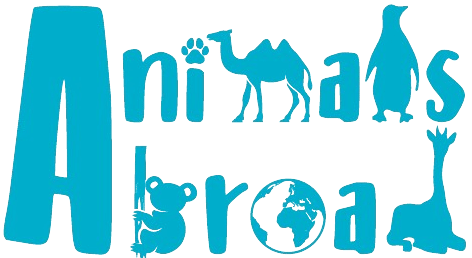With our two boys in tow, we set off on a self-driving safari, camping under the stars and exploring some of the world’s most iconic national parks. Our 51-Day Camping Safari is easy to break down into smaller itineraries. Starting in Cape Town, we travelled up the coast of South Africa and Namibia, inland to Zambia and down through Botswana before finishing in Johannesburg. The 26 days we spent in Namibia were among the best, featuring an incredible diversity in landscapes and wildlife.
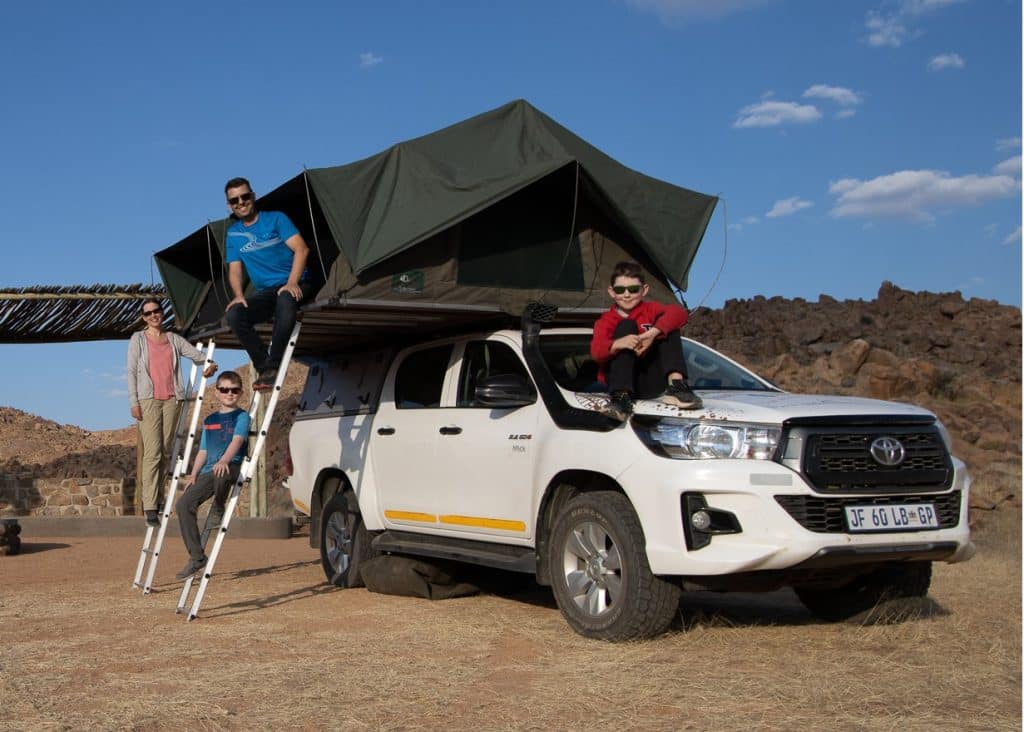
Namibia is a place for adventure, with its towering dunes, vast coastlines, and rare animals. The boys loved running along the shores of the Skeleton Coast and searching for the “Big Five” from our safari jeep. Here, you’ll find a unique mix of campsites, from larger, well-equipped resorts to more remote and peaceful spots where you can immerse yourself in nature.
Our detailed itinerary will give you ideas for your trip and make it easier for you to experience the beauty of Namibia firsthand.
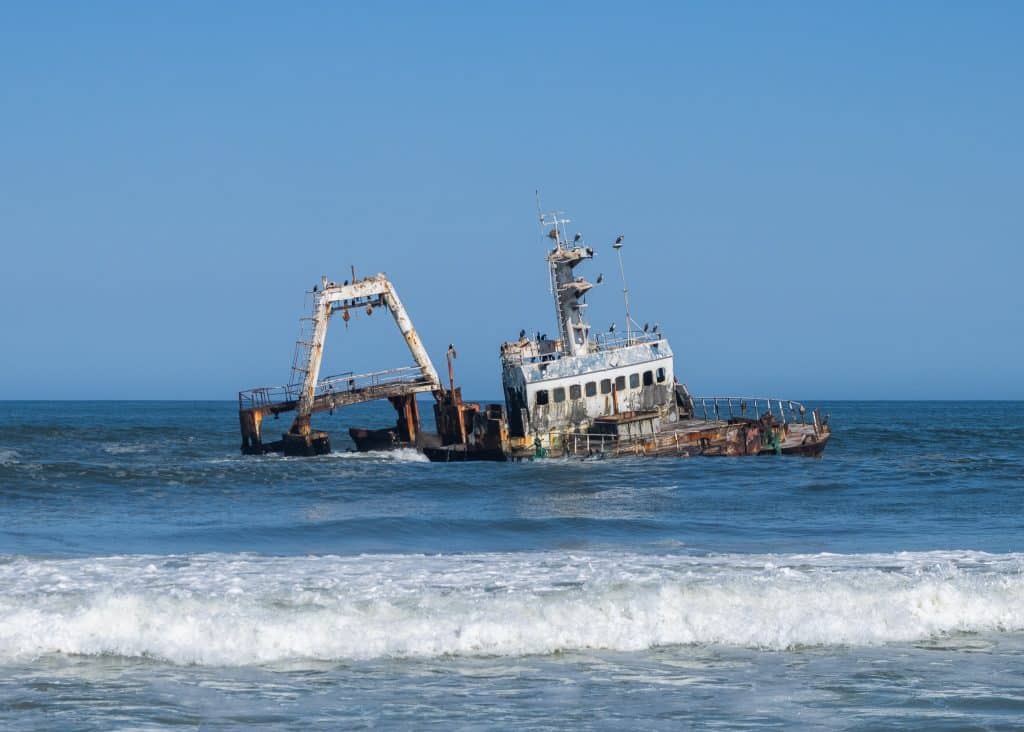
Day 1: Noordoewer Boarding Crossing to Fish River Canyon National Park
Today marked our first border crossing from South Africa into Namibia. We heard stories of long waits and complications, so we left early and prepared ourselves (and the boys) for a long day. However, we were pleasantly surprised. The crossing was smoother than anticipated, taking about an hour and a half in total with a few line-ups, some paperwork and fees.
For more tips on crossing borders, check out: Navigating Border Crossings in Southern Africa.
Once across the border, there was a drastic change in road conditions. While South Africa generally had smooth paved roads and highways, many roads in Namibia were corrugated and bumpy, often making us feel like our brains had been rattled after a long day. We headed inland to Fish River Canyon, where we were greeted by warmer weather. For the first time on our camping safari, we enjoyed an evening playing cards and stargazing.
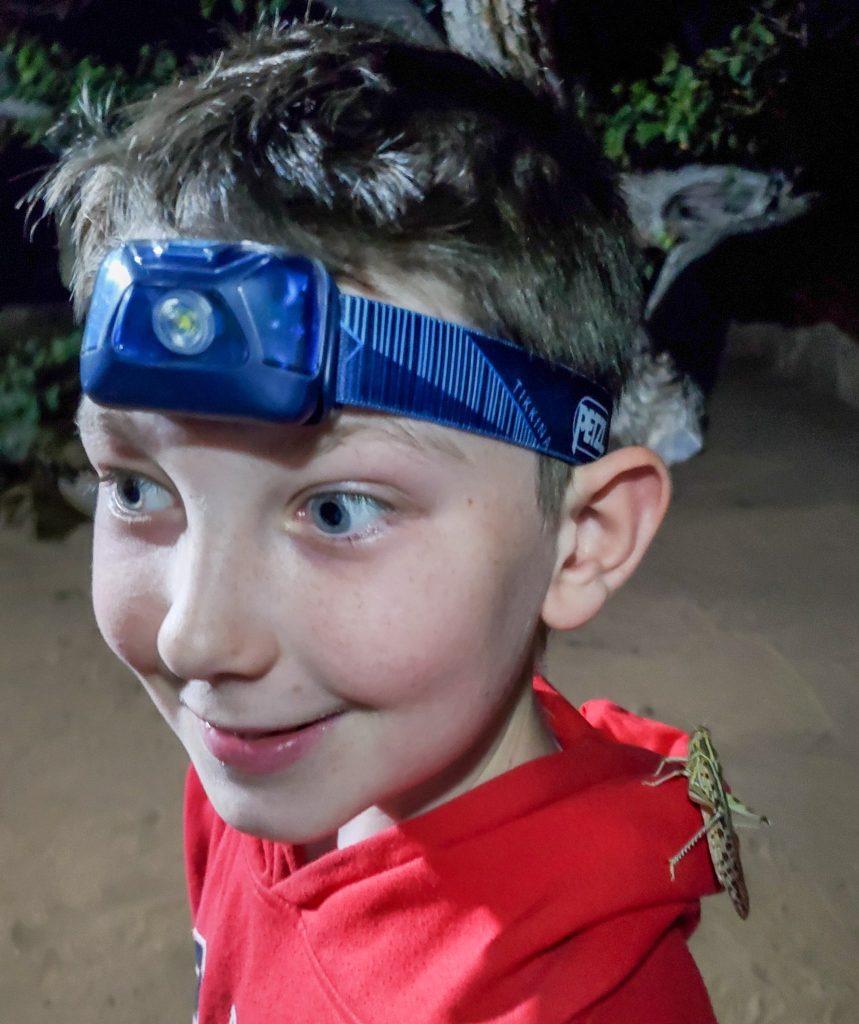
Driving Time: 2 hours and 30 minutes (not including border crossing).
Roads: Mostly good; last hour on a dirt/gravel road.
Supplies: Stock up in Springbok, as there are no options in Fish River Canyon or Ais-Ais. Grocery stores and gas stations were located within 5 minutes of the highway exit.
Campground: Hobas Campground (NWR).
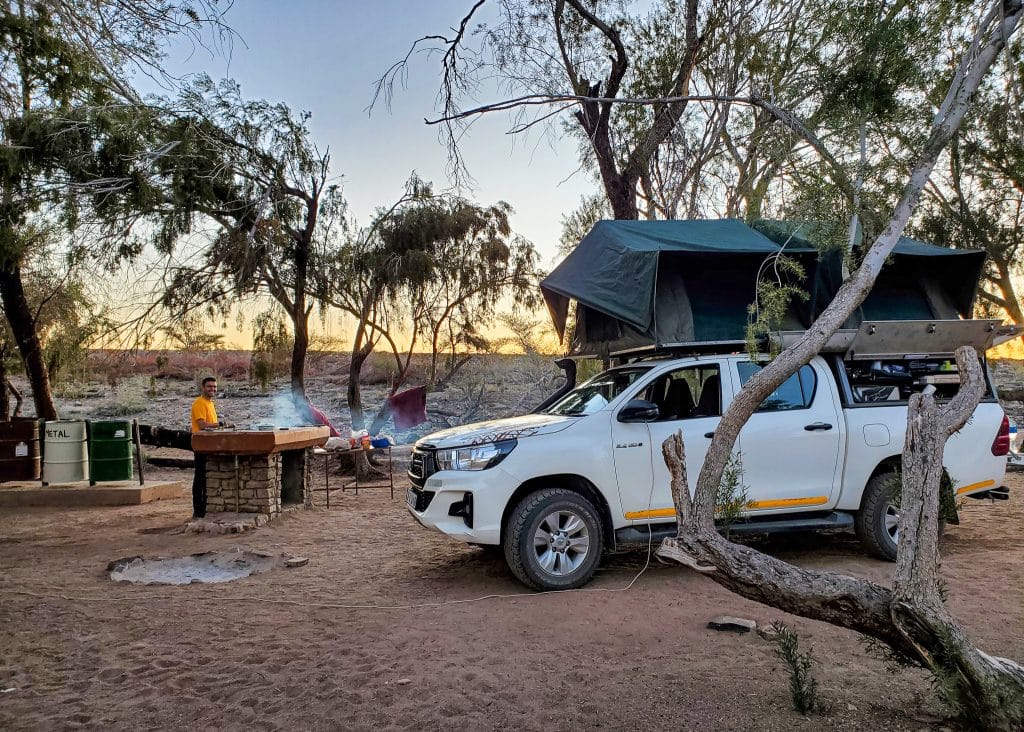
Namibia has an extensive network of campgrounds called Namibia Wildlife Resorts (NWR). These are easy to access and offer amenities such as showers, restaurants, cabins, and laundry services, to name a few. However, with this comes higher prices and large crowds. Although we enjoyed the services, we preferred the smaller campgrounds for their serene atmosphere.
The Hobas NWR sites included running water, electricity and shared ablution facilities. However, they were close together, limiting privacy. The campground had a pool and a restaurant. Upgrades to cabins were available, and good Wi-Fi was available at reception.
Hobas Campground is within Fish River Canyon National Park, so there’s an additional park fee on top of the campground fee. Plan your time in the park during your stay to avoid paying the fee twice.
Safety Tip: Be cautious of baboons! They are not frightened by humans and can be aggressive. We witnessed one boldly snatch a loaf of bread off a neighbouring camper’s table with three grown men sitting at it.
Day 2 & 3: Fish River Canyon National Park to Ais-Ais
Fish River Canyon, the largest canyon in Africa, is one of Namibia’s most popular tourist attractions. We spent time driving along the viewpoints, each offering a unique perspective of the immense canyon and small river winding through the valley. For those wanting to get up close, several hiking tours are available.
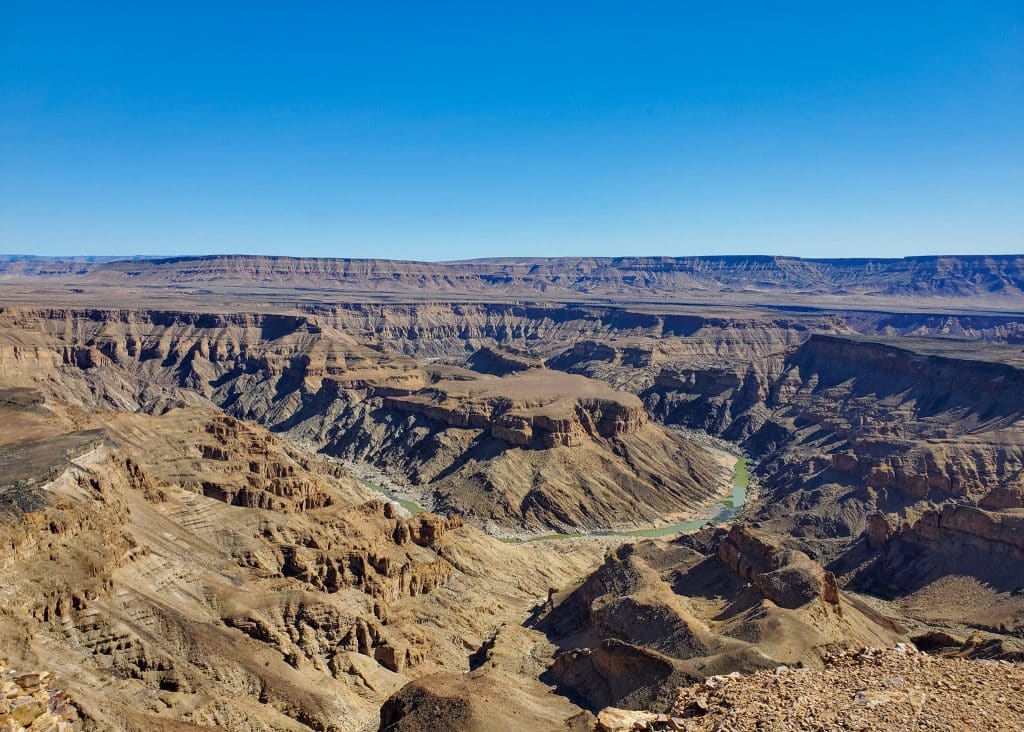
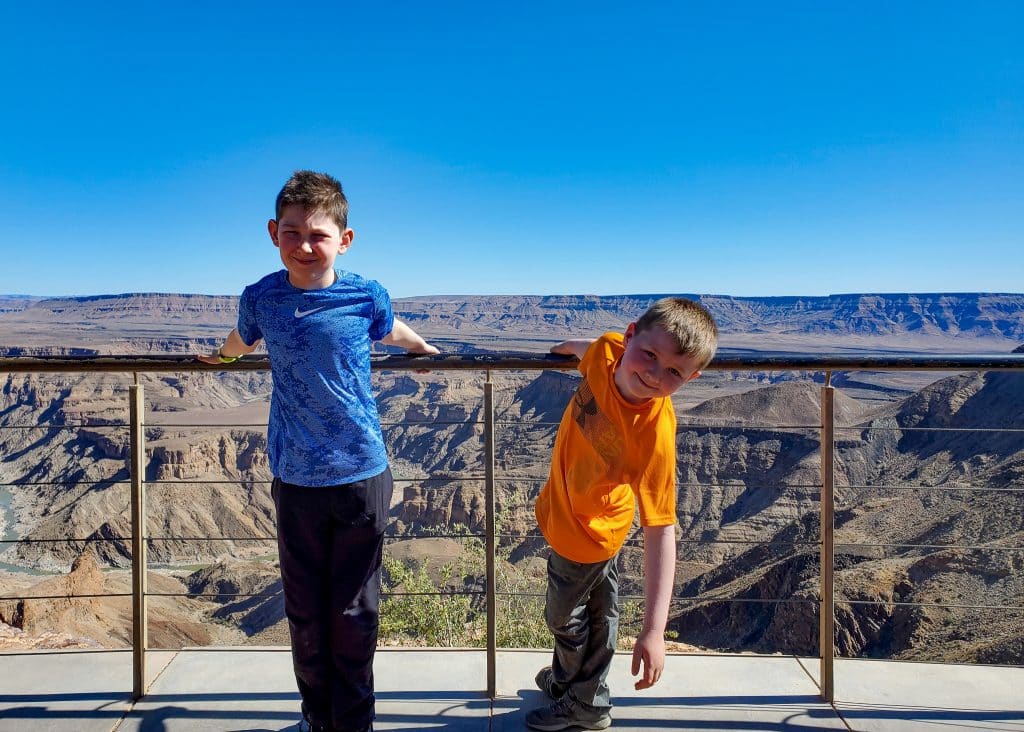
We were eager to settle in when we arrived at Ais-Ais Hot Springs and Spa. The boys began exploring the vast, open spaces until Derek and I were ready to join them in the pool. This beautiful campground is set in a stunning valley surrounded by towering copper mountains. The outdoor pool, heated by nearby hot springs, is perfect for little ones. The onsite hot springs, however, have water temperatures of 65°C (149°F), far too hot to soak in.
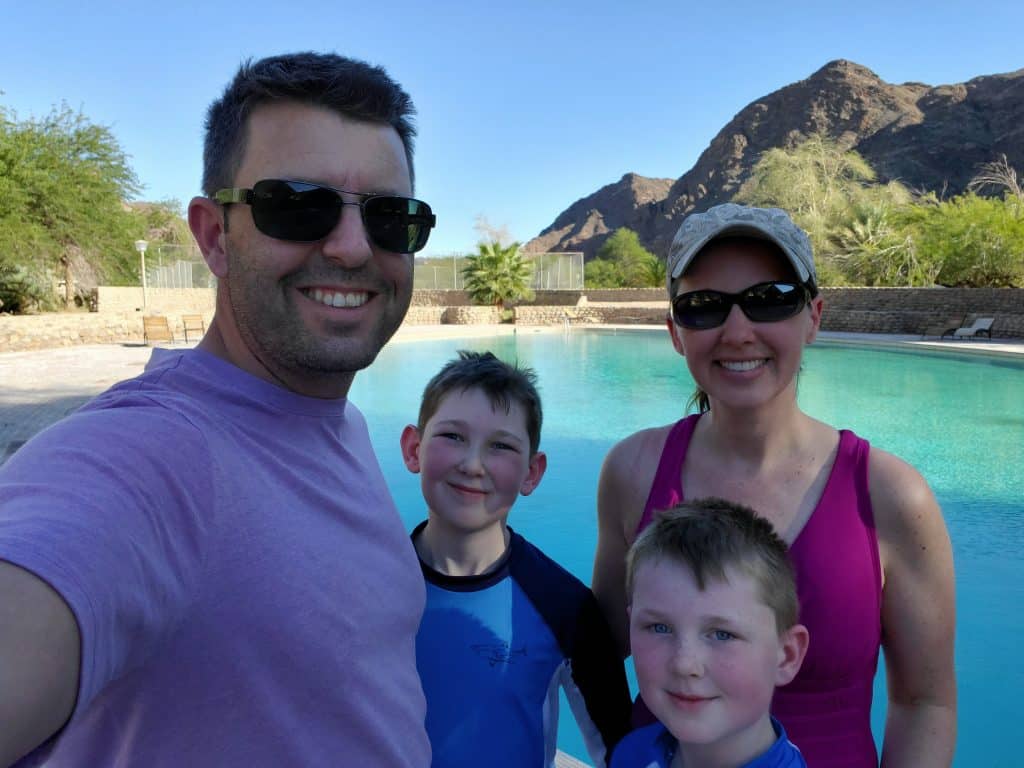
Driving Time: 1 hour
Roads: Corrugated but in good condition.
Campground: Ai-Ais Hot Springs and Spa Resort (NWR).
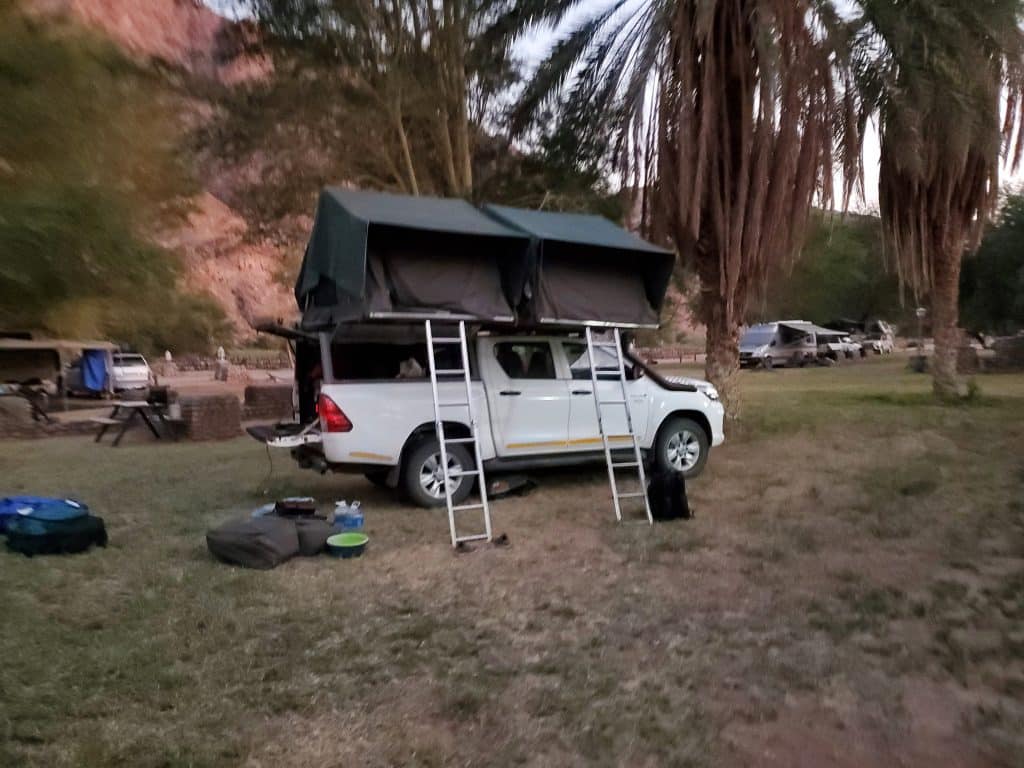
Ai-Ais Hot Springs and Spa Resort has a spacious grassy area in the centre of the campground that is divided into several campsites. We experienced power issues with the on-site electrical plugs during our stay, so we were given an extension cord to hook up our truck to the kitchen area. Several shared fire pits, kitchen areas, and ablution facilities are scattered throughout the resort, as well as a variety of accommodations, from campsites to hotel rooms. Restaurant and laundry service were available. There was poor Wi-Fi at reception.
Tip: If we were to stay in the area again, we would book at Ais-Ais Hot Springs and Spa and drive the hour to Fish River Canyon National Park rather than staying at Hobas. It is a far nicer campground and you skip the addtional National Park fee as Ais-Ais Hot Springs and Spa is located outside Fish River Canyon.
Day 4: Ais-Ais to Landsberg Farm campsite, near the town of Helmeringhausen
We stopped at Landsberg Farm to break up our journey to Sossusvlei National Park, and we are so glad we did. This family-run campground, located off the beaten path, became one of our favourite stops. Reaching it required a long stretch of off-roading, but it was worth every bump. With only four campsites, we felt completely immersed in nature. Although remote, the amenities were luxurious. We spent a quiet evening playing cards, admiring the stunning mountain views, and stargazing.
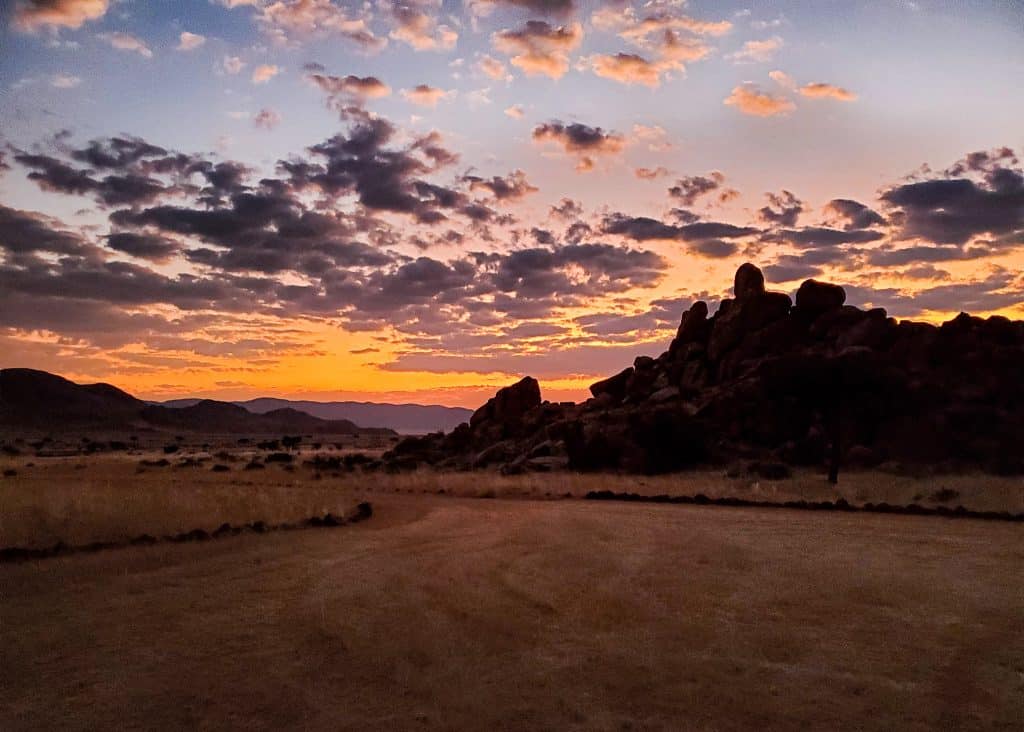
Driving Time: 4 hours to the town of Helmeringhausen, then 45 minutes once you reach the entrance to the farm.
Roads: A mix of paved highways and corrugated roads in good condition. The last 25km to the farm was off-road and bumpy—four-wheel drive and reduced tire pressure recommended.
Supplies: Fuel was available in Bethanie. For groceries, we detoured 20 minutes each way to Keetmanshoop, where we found two large grocery stores and a full-service fuel station.
Campground: Landsberg Farm Campground.
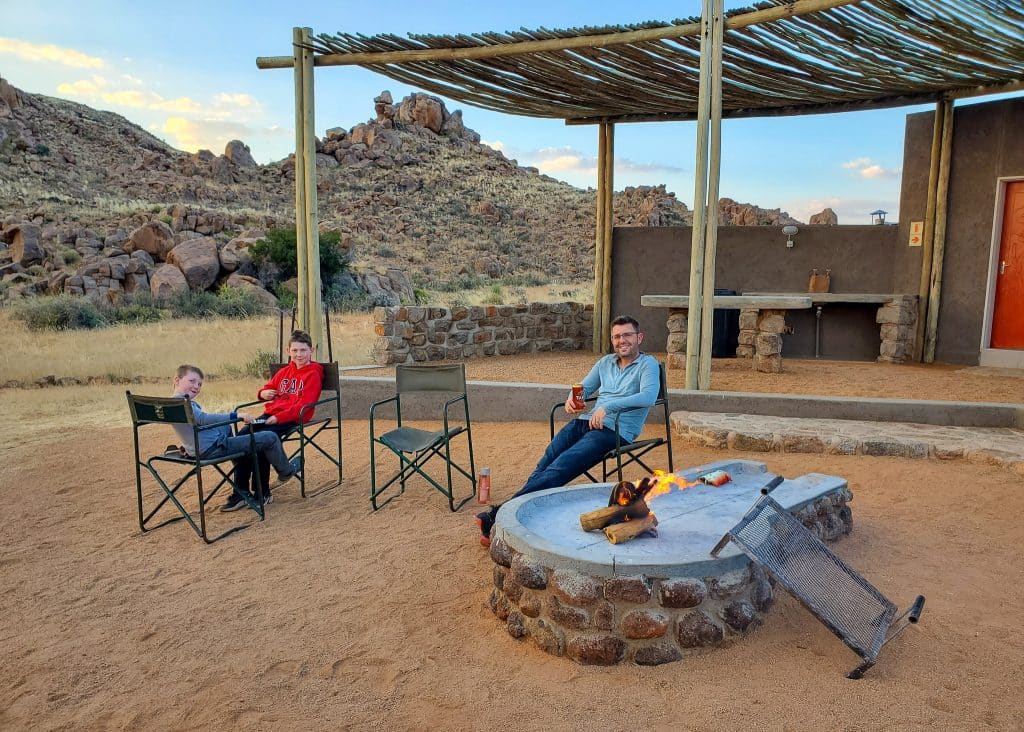
Landsberg Farm Campground was located on a 16,000-hectare working farm. Sites feature private showers, toilets, outdoor sinks, fire pits, and hot water on demand. Wi-Fi was available for a small fee, but the signal did not reach the campsites.
Day 5: Landsberg Farm to Sesriem, near Sossusvlei National Park
We woke up to discover our first flat tire. Thankfully, Derek is handy with cars, and after some work, the spare was on. Our hosts directed us to a repair shop in Helmeringhausen, and we were soon back on track, having a quick fix (costing about CAD 8) and a well-deserved ice cream stop.
The drive took us through stunning canyon scenery before transitioning to expansive grassy plains with large, purple-hazed mountains in the distance. The contrast between the pale-yellow grasses and the pinkish-purple mountains was beautiful —pictures can’t do it justice. Today, we had another first—Our first zebra sighting. The boys were thrilled to realize that the horses off in the distance were black and white striped.
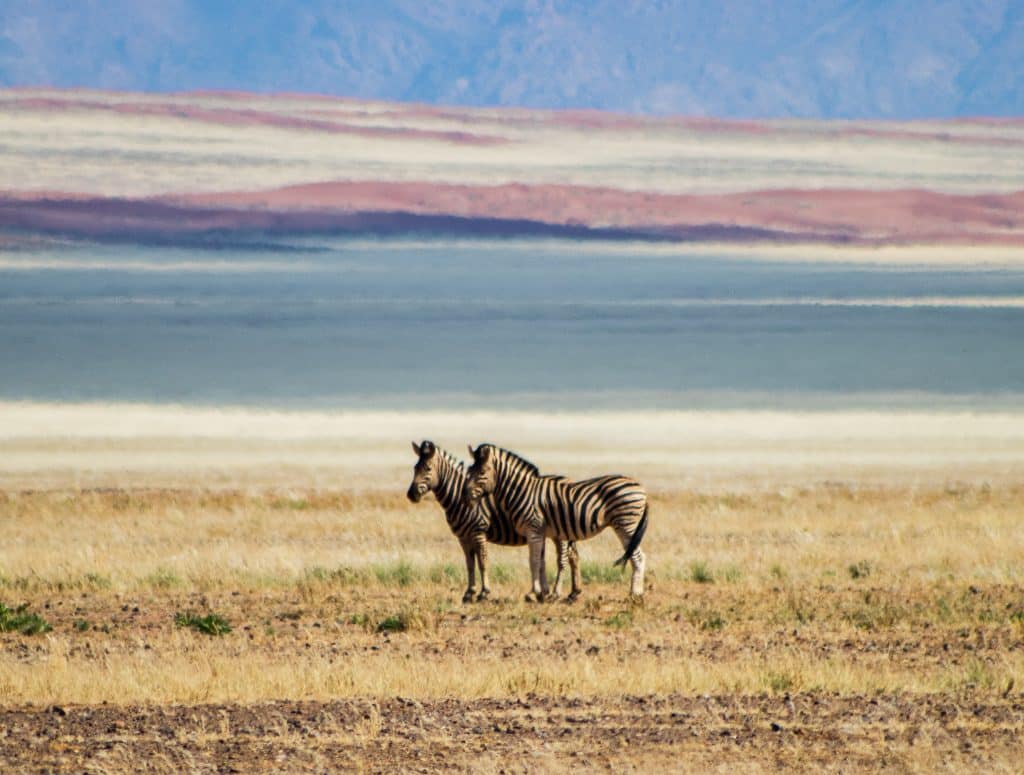
Driving Time: 4 hours and 30 minutes.
Roads: Off-road leaving the farm, then a corrugated highway with a few sections with larger potholes.
Campground: Sesriem Campground (NWR).
Sesriem Campground was one of the more underwhelming NWRs. Campsites were moderately spaced, with a single large tree offering shade but little privacy between sites. Shared ablution facilities were understocked and dirty. Upgrades to cabins were available, and there was a restaurant on-site. Wi-Fi was available for a fee.
Tip: The Sesriem NWR is inside Sossusvlei National Park, meaning an additional National Park fee applies. The NWR was overpriced for what it offered. We recommend staying at a site outside the park for better value.
Day 6: Sesriem Camp Day
With so much moving around, we often liked to add a day here and there for the boys to do schoolwork, for us to rest, and to catch up on laundry. While sitting in the main lobby, the camp hostess approached Mason, asking about the book he was reading. This led to a conversation about her children, and later that day, her son and daughter joined the boys for card games and reading.
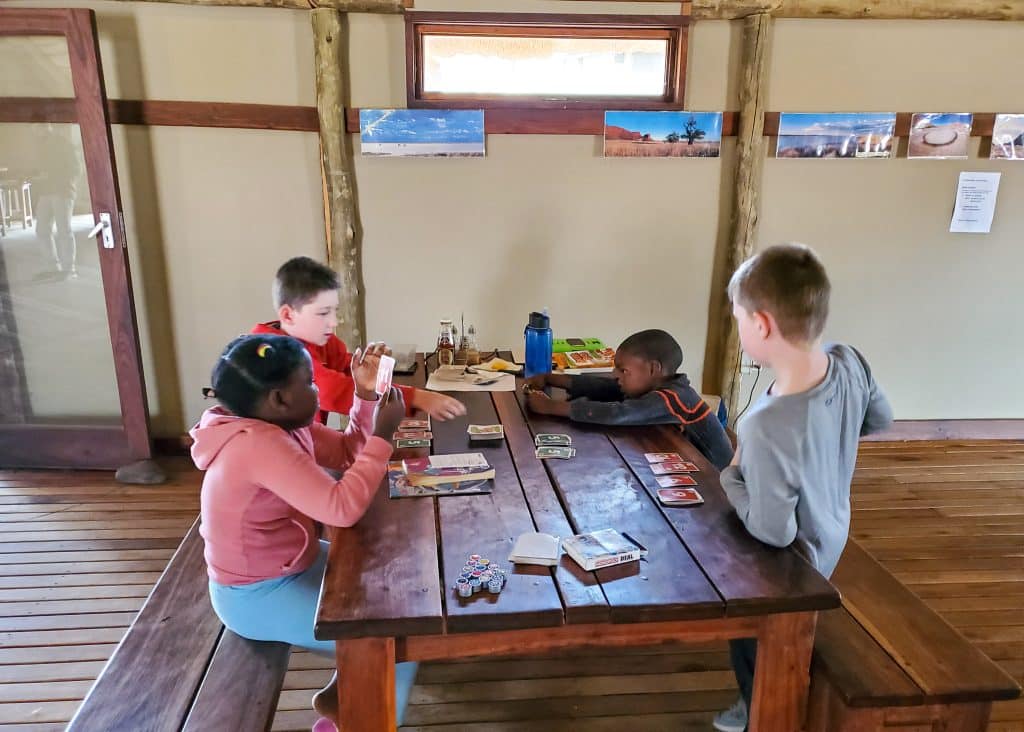
Day 7: Sossusvlei National Park en route to Naukluft National Park
Soon after entering Sossusvlei National Park, the iconic dunes came into view, rising high above the ground. We were fascinated by the stark contrast between the deserts we had encountered on our world trip so far: the golden sands of the Sahara Desert in Morocco and Egypt’s unique white and black sandy landscapes. Nothing could have prepared us for the vibrant oranges of Sossusvlei.
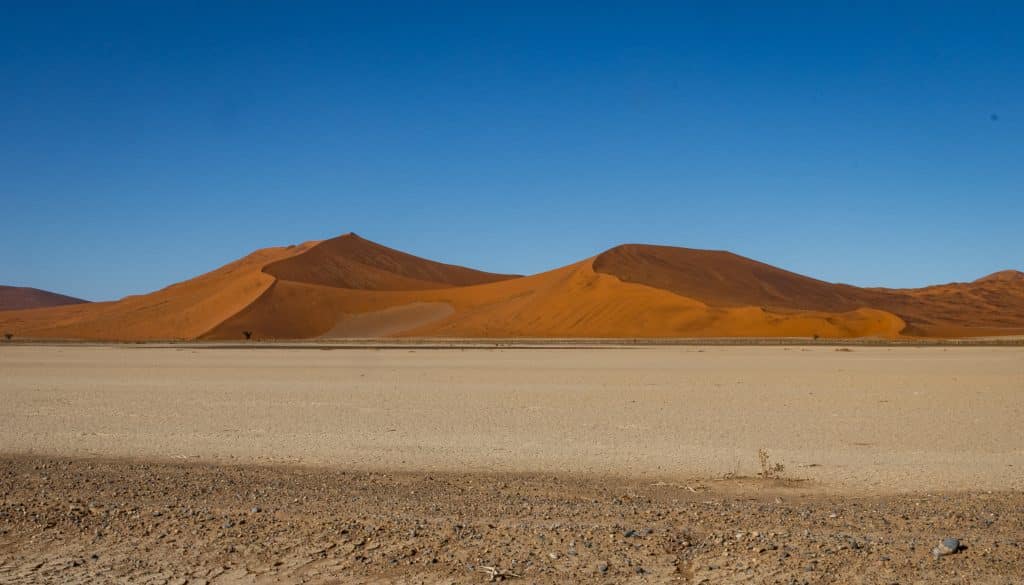
We followed the paved road to Deadvlei, where it quickly turned to soft sand. Only 4×4 vehicles are allowed in this area, so we ventured in for a closer look at the dunes and mud pans but turned back after spotting a truck like ours stuck in the deep sand. We didn’t want to risk it!
Instead, we returned to the paved road and stopped at the famous Dune 45. We marvelled at the massive dark orange hill rising against the bright blue sky, while the pale outline of the moon disappeared behind a tree.
Though many people hike to the top of Dune 45 for stunning park views, we decided not to attempt it today, as a couple of family members were feeling unwell.
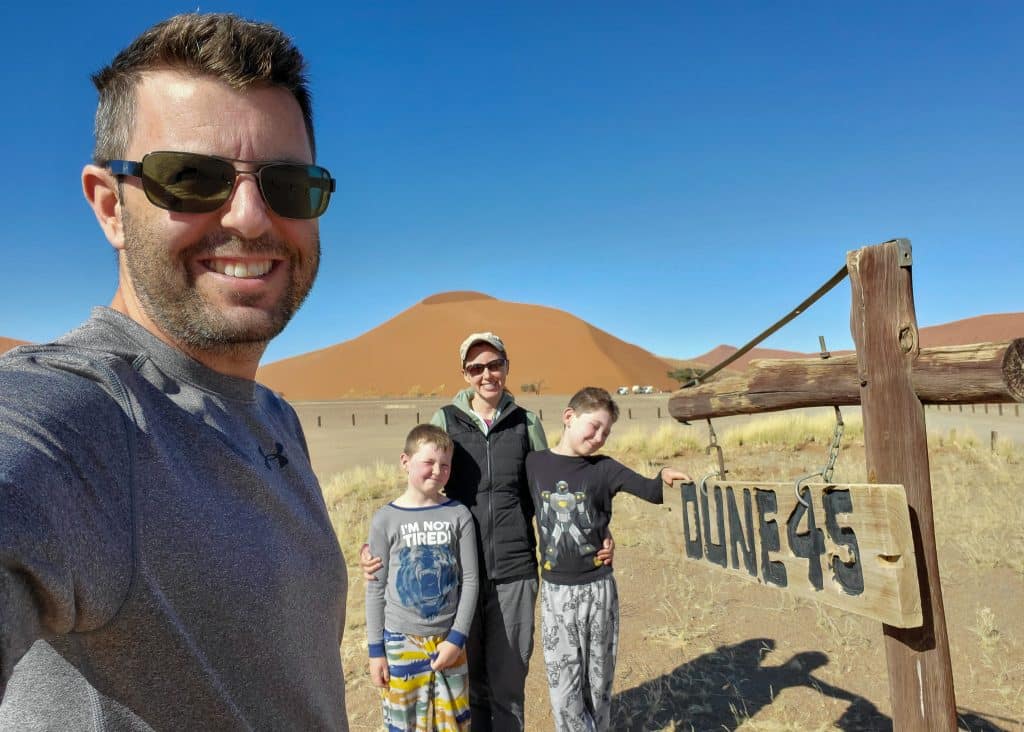
Our next stop was Naukluft National Park, a well-known hiking destination with several mountain trails from the reception area. After chatting with the staff, we were warned about baboons in the area. They advised us not to leave our tents up when we weren’t around. These baboons were skilled at tearing tents apart and rummaging inside! With this in mind, we weren’t eager to venture off on a hiking trail with the kids.
We set up camp to stay warm, but the higher elevation meant temperatures dropped to -2°C (28°F) overnight. We briefly considered upgrading to a cabin for an extra CAD 200 on top of our CAD 95 campsite fee, but the cabins weren’t heated, so we opted to tough it out. It ended up being one of those “wear everything you own” kind of nights. It was unpleasant for everyone, especially with Mason being ill. Overall, Naukluft National Park felt like an expensive and unnecessary stop for us.
Driving Time: 1 hour 30 minutes (not including time spent in Sossusvlei National Park).
Roads: Mainly corrugated roads.
Campground: Naukluft Campground (NWR).
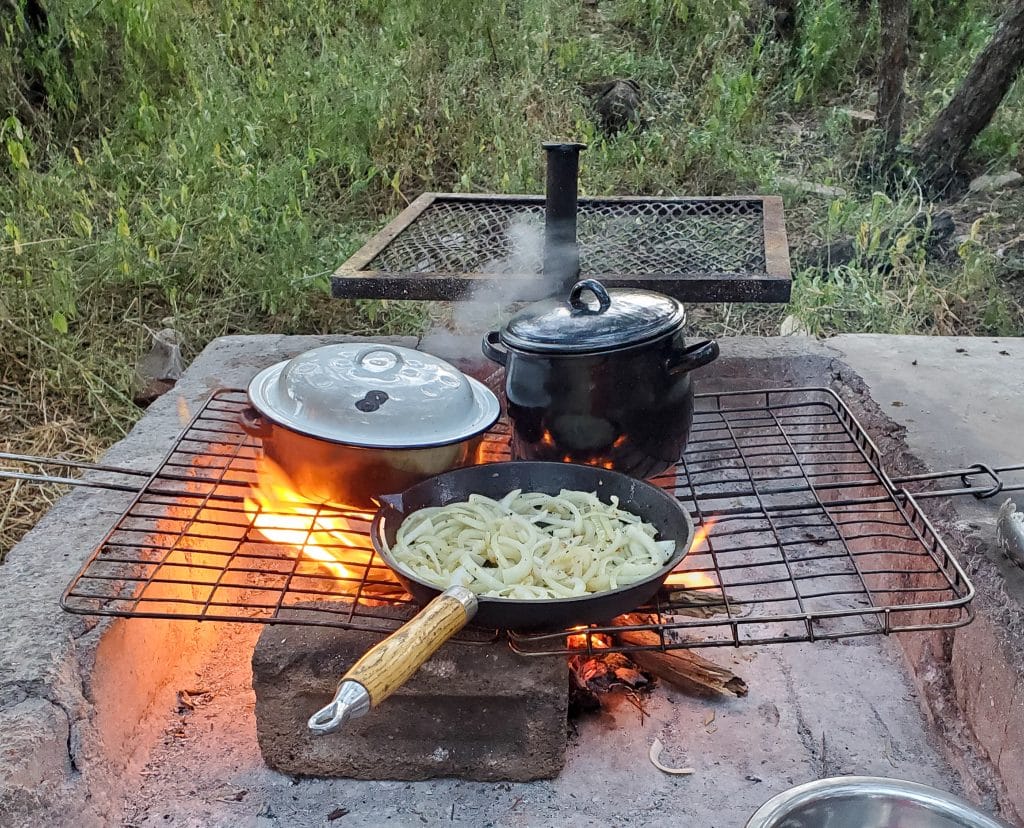
Naukluft Campground is set in a mountain range. The campsites were close together and shaded by trees. Despite the number of trees, they offered little privacy. Shared ablution and kitchen facilities, along with a restaurant, were available. Wi-Fi was available at reception.
Day 8: Naukluft National Park to Swakopmund, with a stop in Solitaire
Even if Solitaire is a bit out of the way, we highly recommend a visit. You might pass through without realizing what you’re missing, but trust us, it’s worth the detour. The apple pie at McGregor’s Bakery is so famous that tour buses make their way to this small roadside fuel stop, where tourists eagerly hop off to buy a warm slice of pie. The counter is filled with an array of sweet and savoury treats, and it’s hard not to indulge in a few. The sausage rolls and cinnamon buns were excellent, too.
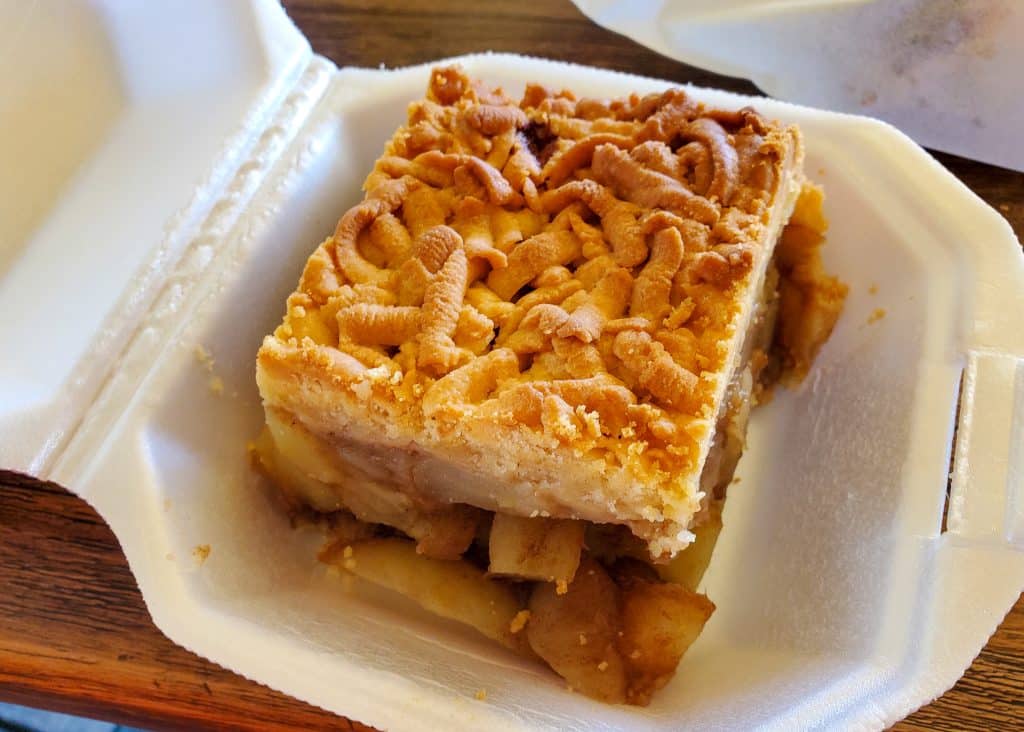
Once your taste buds are satisfied, be sure to wander through and photograph the ghost cars—an odd yet fascinating sight.
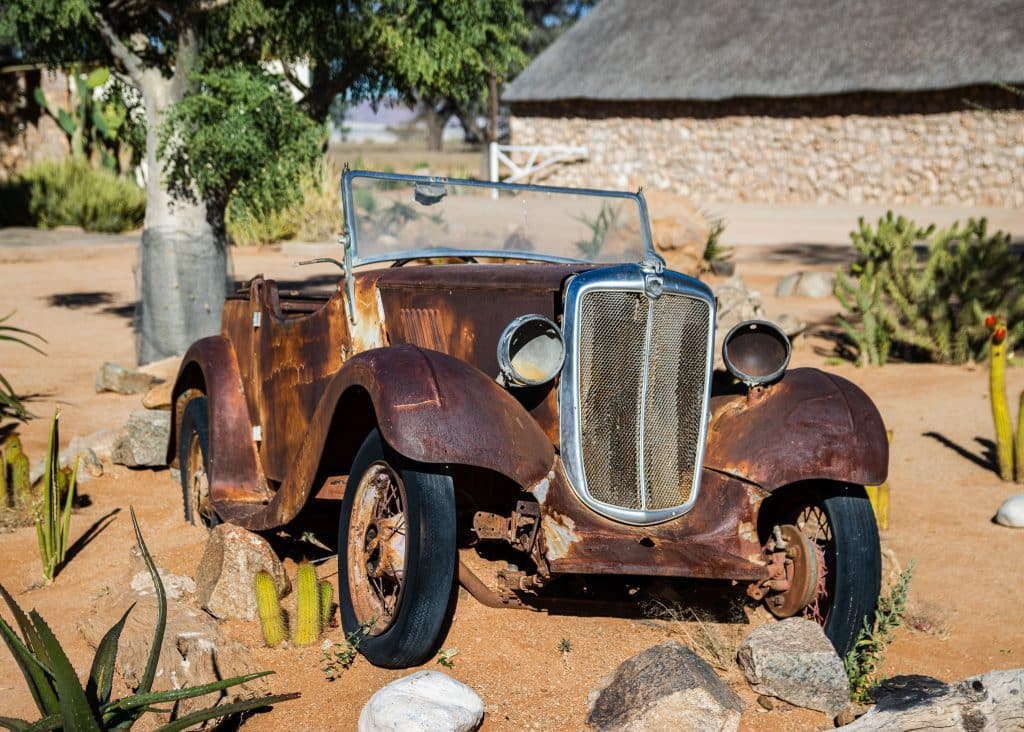
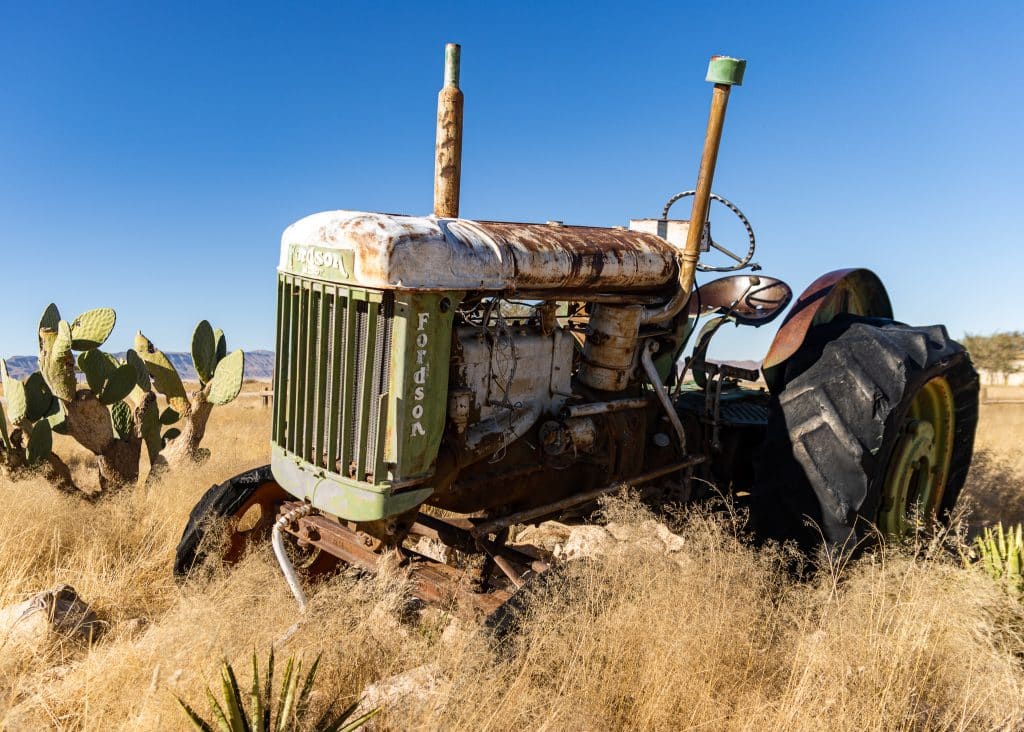
Before reaching Swakopmund, we passed another iconic landmark.
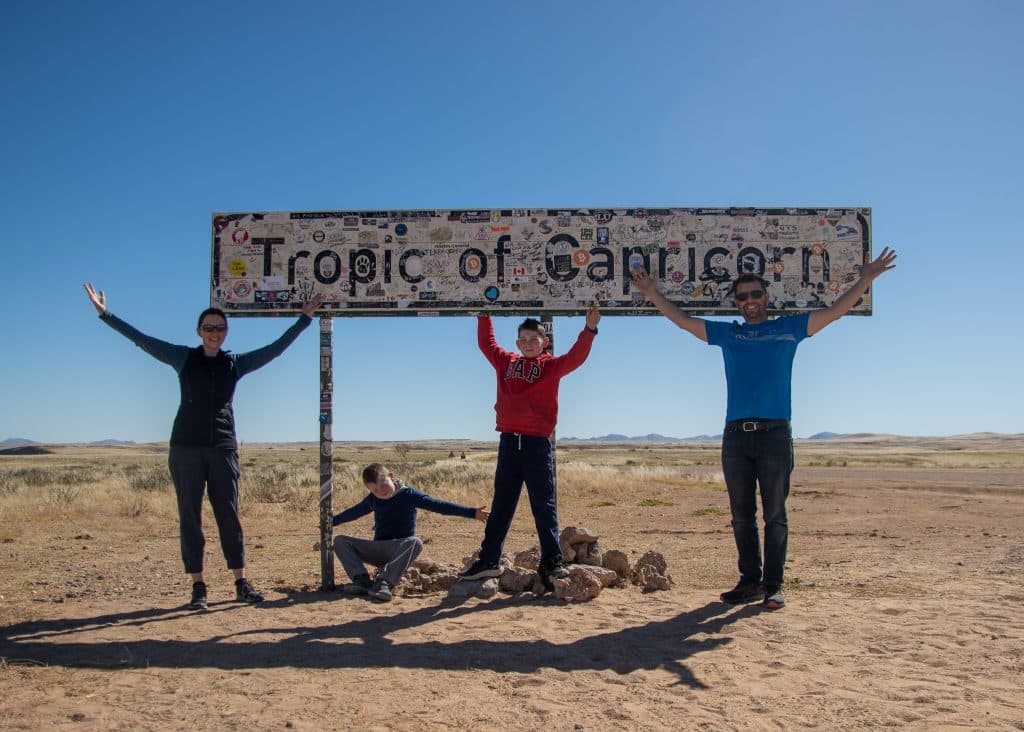
Driving Time: 4 hours and 30 minutes (not including time in Solitaire).
Roads: Corrugated roads until we hit the paved highway leading to Swakopmund.
Campground: Alte Brucke Resort.
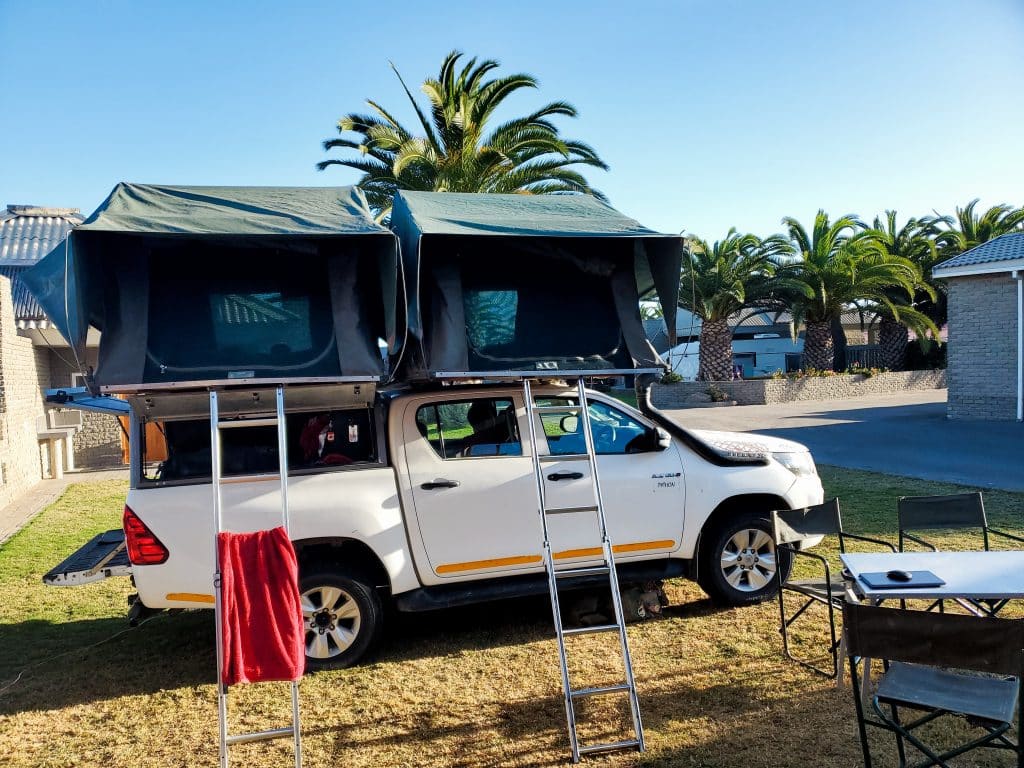
Alte Brucke Resort campsites were close together but separated by half-stone walls, allowing for some privacy. Each site had power, water, a private bathroom/shower, a covered patio, a fire pit and chimney, an outdoor sink, and a concrete prep counter. There was a grassy area to set up campers or tents. Wi-Fi reached the campsites. Cabins and a restaurant were also available. The resort is within walking distance of the beach, the famous Swakopmund jetty, and is close to grocery stores, banks, and gas stations.
Day 9: Swakopmund
We spent a lazy morning at camp and then took a leisurely walk to the beach in the afternoon to enjoy the ocean views from the jetty. Founded by Germany in 1892, Swakopmund is a large town known for its beach resort atmosphere. German influence can still be seen throughout the city’s architecture. The town offers plenty of adventure activities and several shops, making it a great place to stock up on essentials.
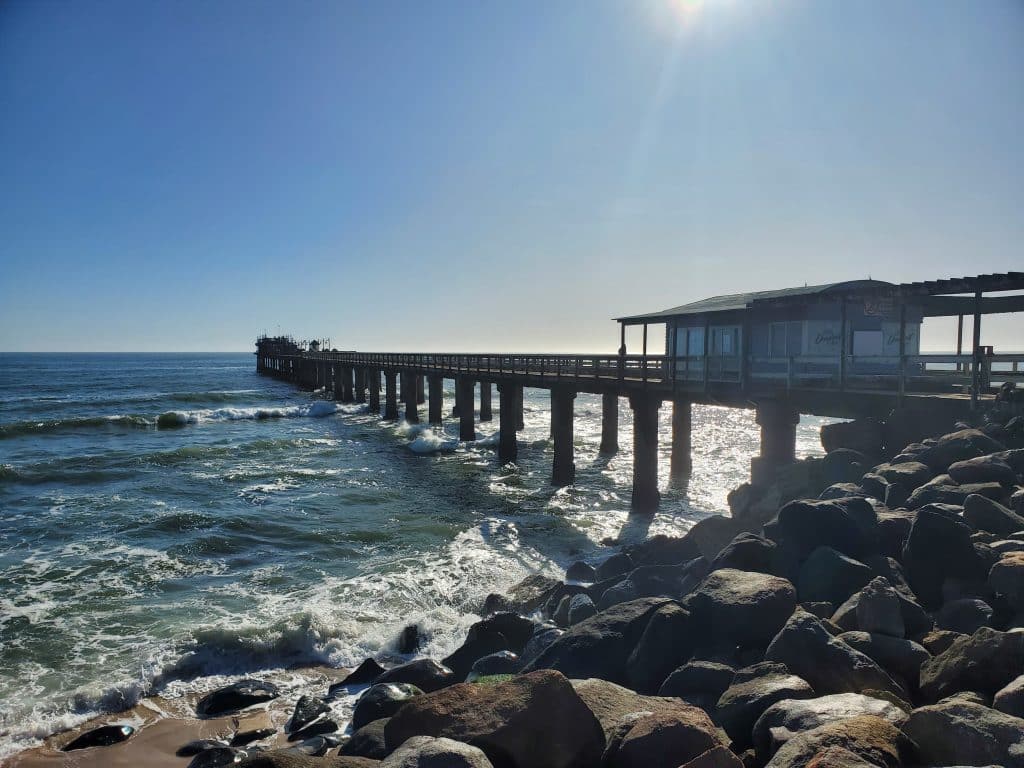
Day 10: Day trip to Walvis Bay (overnight in Swakopmund)
Walvis Bay, a small community about 35 minutes from Swakopmund, is known for its Cape fur seal tours. Being animal lovers, we couldn’t miss a chance to kayak with them. On our way to Pelican Point, home to the seal colony, we drove past hundreds of flamingos, salt pans, and a pink lake.
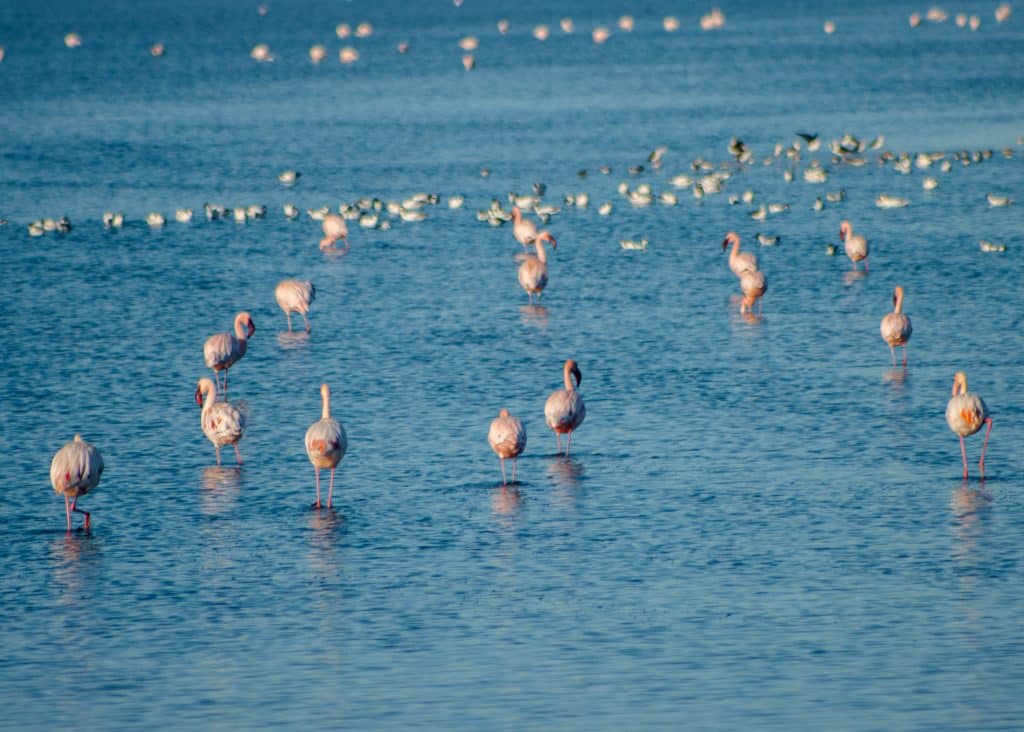
We kayaked alongside hundreds of Cape fur seals near Walvis Bay—watching them leap, splash, and play all around us. The boys paddled confidently, even leading the way at times, as curious seals darted under our boats and swam alongside us. It was one of the most surprising and joyful wildlife encounters of the trip.
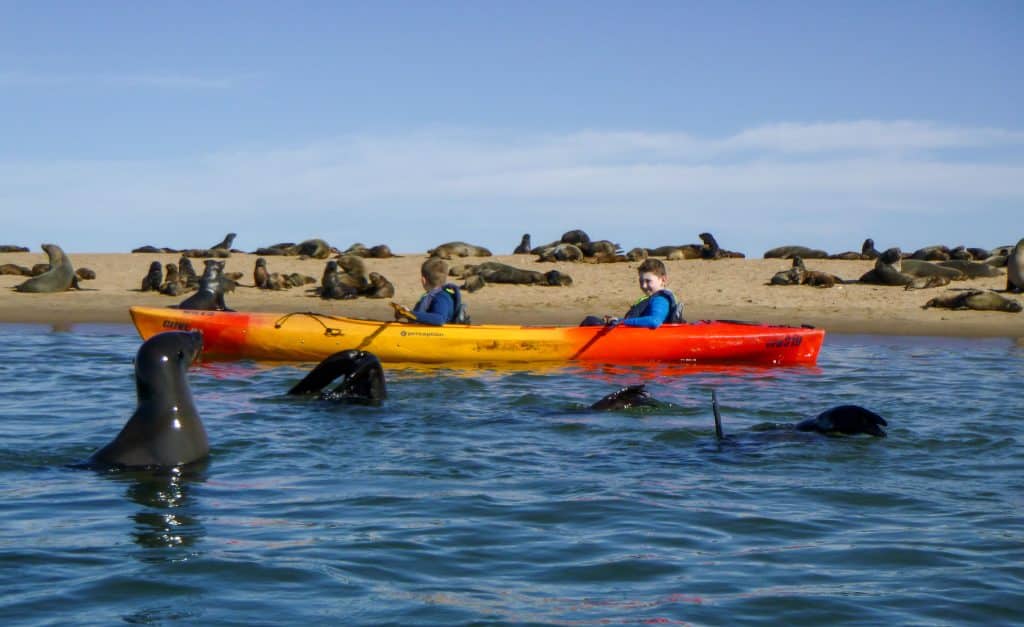
Day 11: Swakopmund to Mile 108, Skeleton Coast
Namibia’s Skeleton Coast is home to over a thousand shipwrecks. I imagined driving along the coast with beaches cluttered with ruins, but the area we were in had only a few remnants. We later learned that the Skeleton Coast is one of Namibia’s largest National Parks, spanning 500km of coastline, and the region with the highest concentration of shipwrecks is only accessible through guided tours.
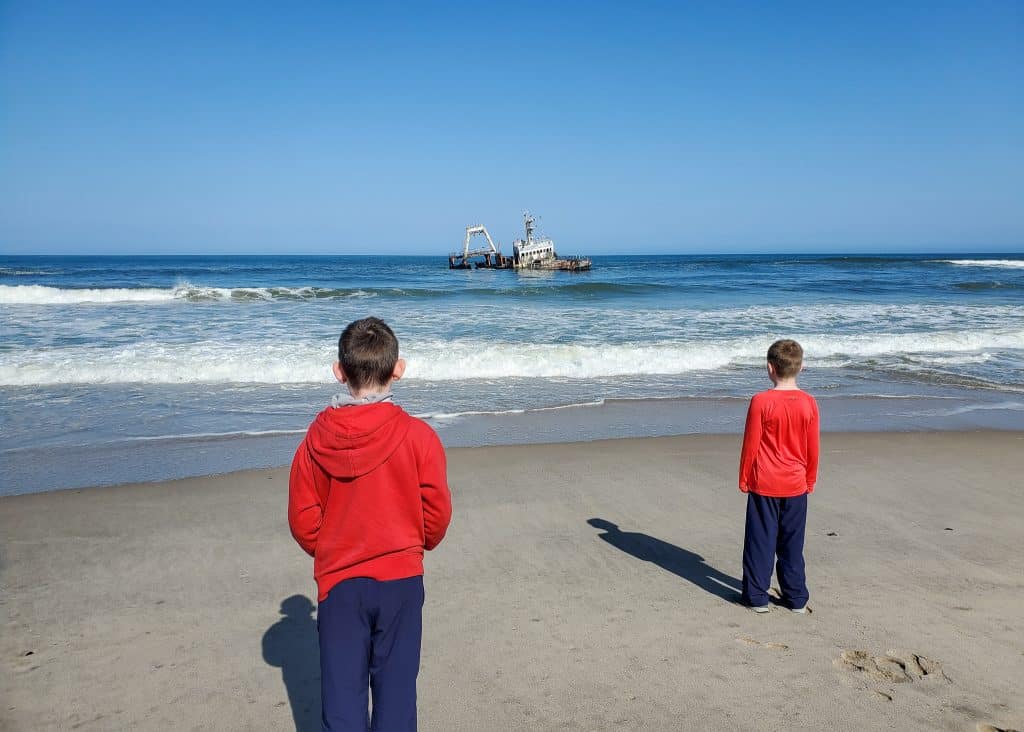
We loved the serenity of the Mile 108 campground—the calmness and quiet. The only sounds were the waves crashing, the crackling fire, and the boys’ laughter as they played on the beach. It was grey and foggy when we arrived, so we spent most of the afternoon huddled around the fire, enjoying homemade s’mores.
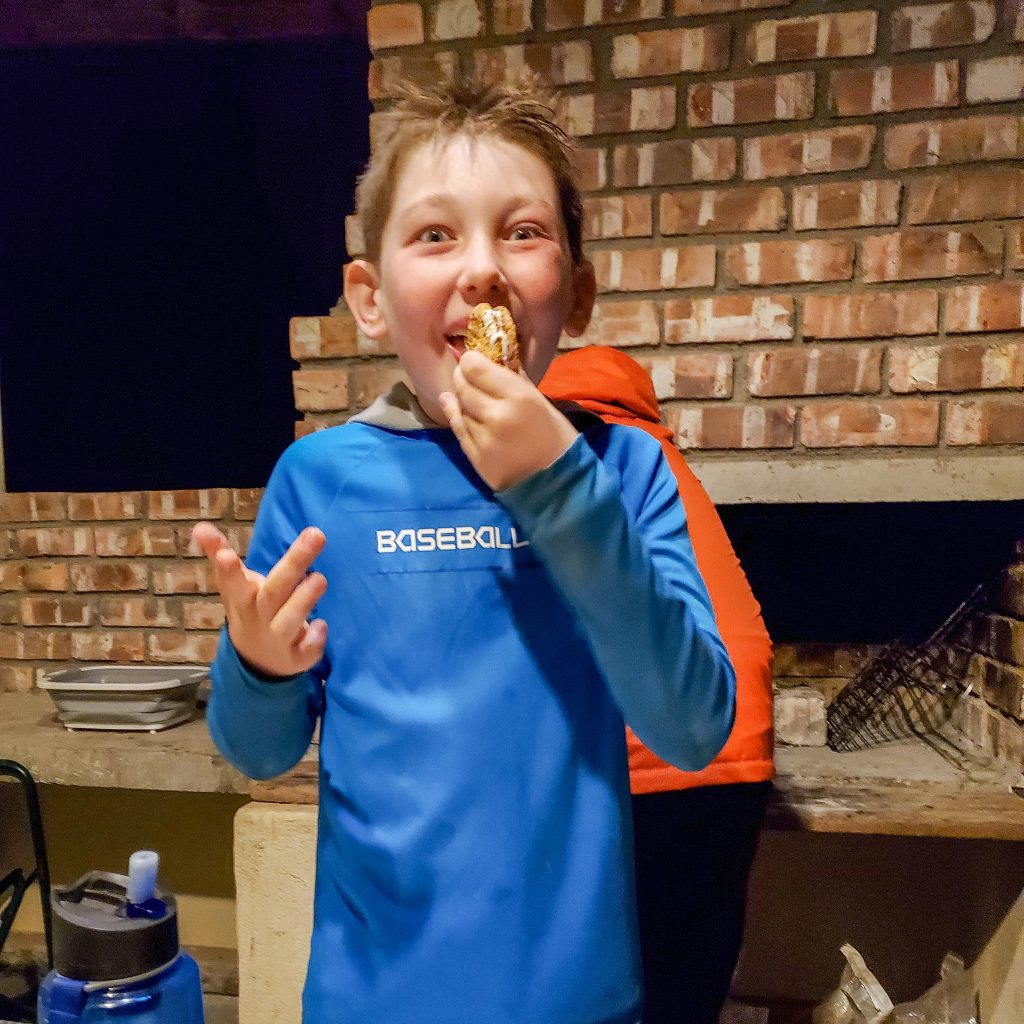
Driving Time: 2 hours (if you drive straight without stopping to see the shipwrecks).
Roads: Paved roads until Mile 108, then off-road on the sand.
Campground: Mile 108.
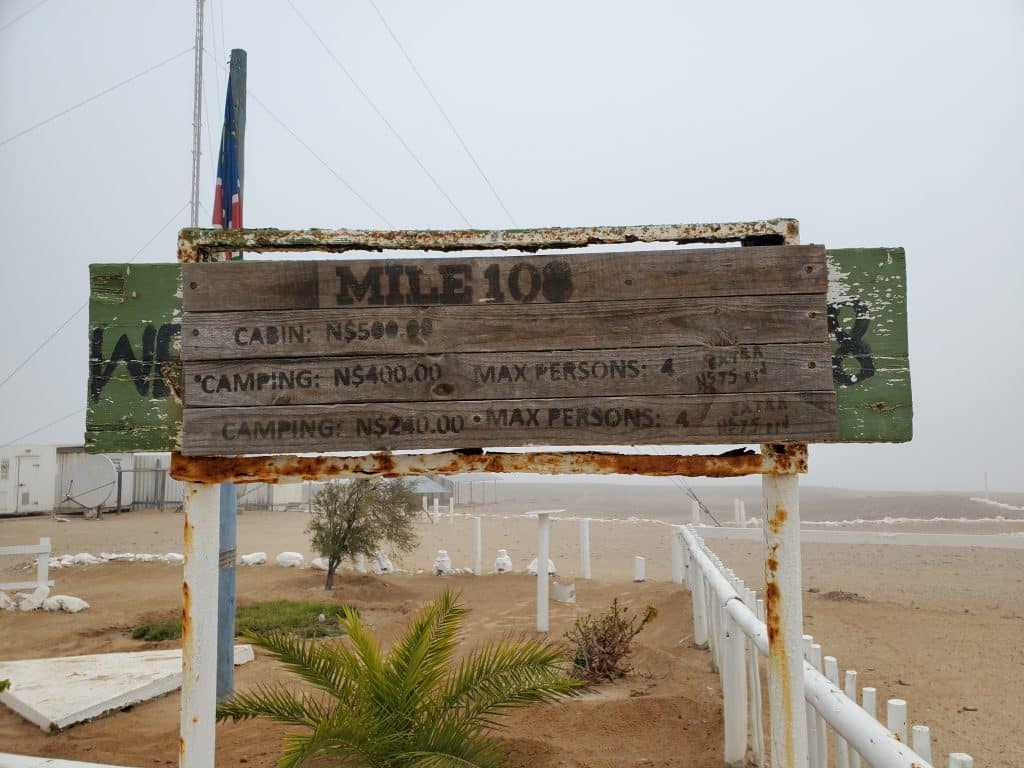
Mile 108 campground is located on the beach next to the Atlantic Ocean. During our stay, the weather was mild, with a heavy mist coming off the ocean that made everything damp. Since there were so few people, the manager gave us a free upgrade to a site with a private bathroom/shower and a covered patio with an enclosed fire pit. This upgrade made a huge difference because the wind picked up in the evening, and we may not have been able to get a fire going with an open fire pit. We only saw one other camper during the low season, but privacy might be an issue during peak season since the campsites were quite close together.
Day 12: Skeleton Coast to Uis
The next few days were meant to break up our drive from the Skeleton Coast to Etosha National Park. As we ventured further north and inland, temperatures warmed, and we could finally enjoy more time outdoors.
Over the next two days, we stayed at some fantastic campsites, the first being Madisa Campground. Madisa was one of our favourite campgrounds because of its unique charm. The campsite had a rustic feel, with a private open-air bathroom and shower and large leafy trees that provided ample shade and privacy. Once the sun set, we were mesmerized by the millions of sparkling stars that filled the sky—one of the best night skies we’ve ever seen.
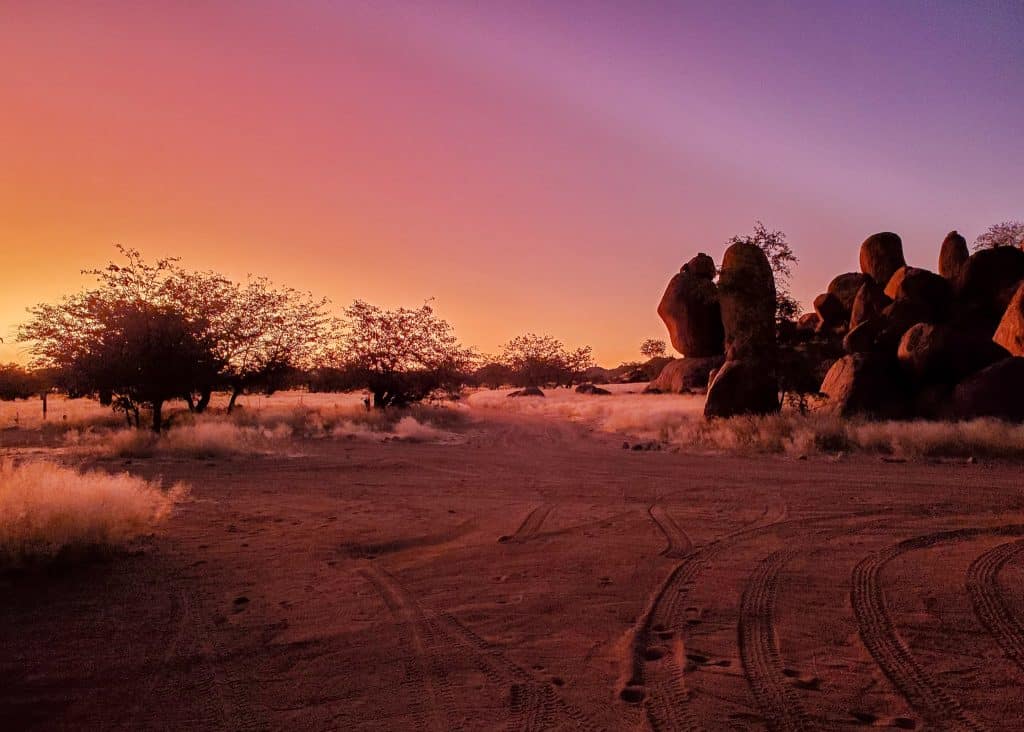
Driving Time: 3 hours and 30 minutes.
Roads: A mix of paved and corrugated roads.
Campground: Madisa.
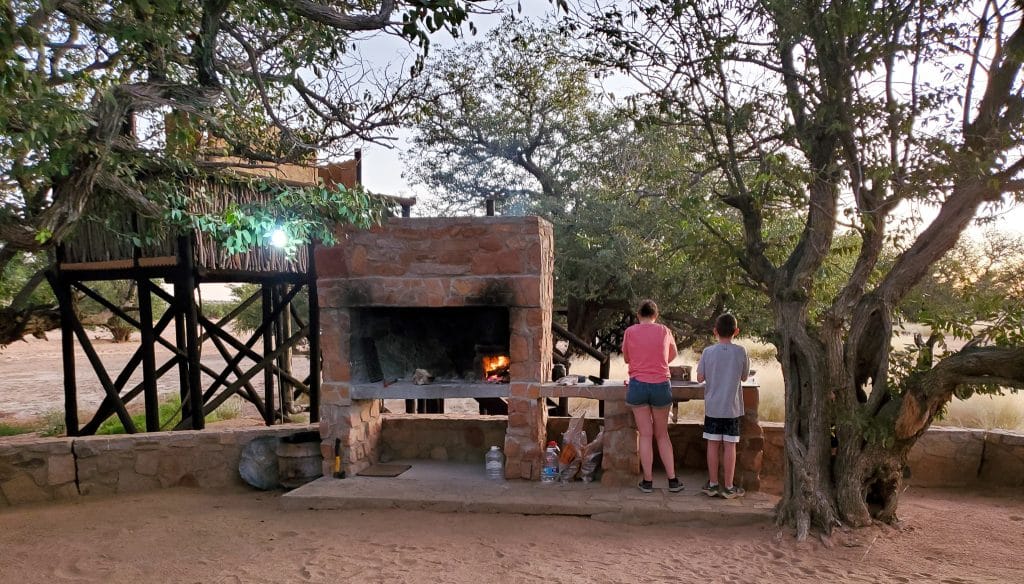
The spacious campsite at Madisa had a large fire pit for cooking, an outdoor sink, a prep area, and hot water from a fire source. Power for charging electronics was available but not for camper hook-up, and a small light was placed on a low-hanging tree branch. A bar at reception sold cold beverages, and the owner offered group hikes to watch the sunset. No Wi-Fi.
Day 13: Uis to Ongongo Waterfall campsite (Closest towns, Palmwag and Sesfontein)
We left Madisa early in the morning, planning to visit a few attractions in Twyfelfontein on our way to Ongongo Waterfall.
Twyfelfontein was easy to find, with the main attractions clearly marked. These include Burnt Mountain, the Organ Pipes, the Petrified Forest, and Indigenous rock art. When we added up the cost of each attraction for the four of us, the total came to CAD 250. Although the sites looked beautiful in the brochures, we opted to save money for the upcoming game drives and skipped the attractions.
Ongongo Waterfall Campground was a refreshing stop after the long drive. We quickly set up camp, grabbed some cold drinks, and made our way to the waterfall. During the dry season, the stream is low, making it easy to cross and walk along. The water was cool and clean, perfect for swimming or dipping your feet in after a long drive. The boys loved jumping off the rocks into the deep water.
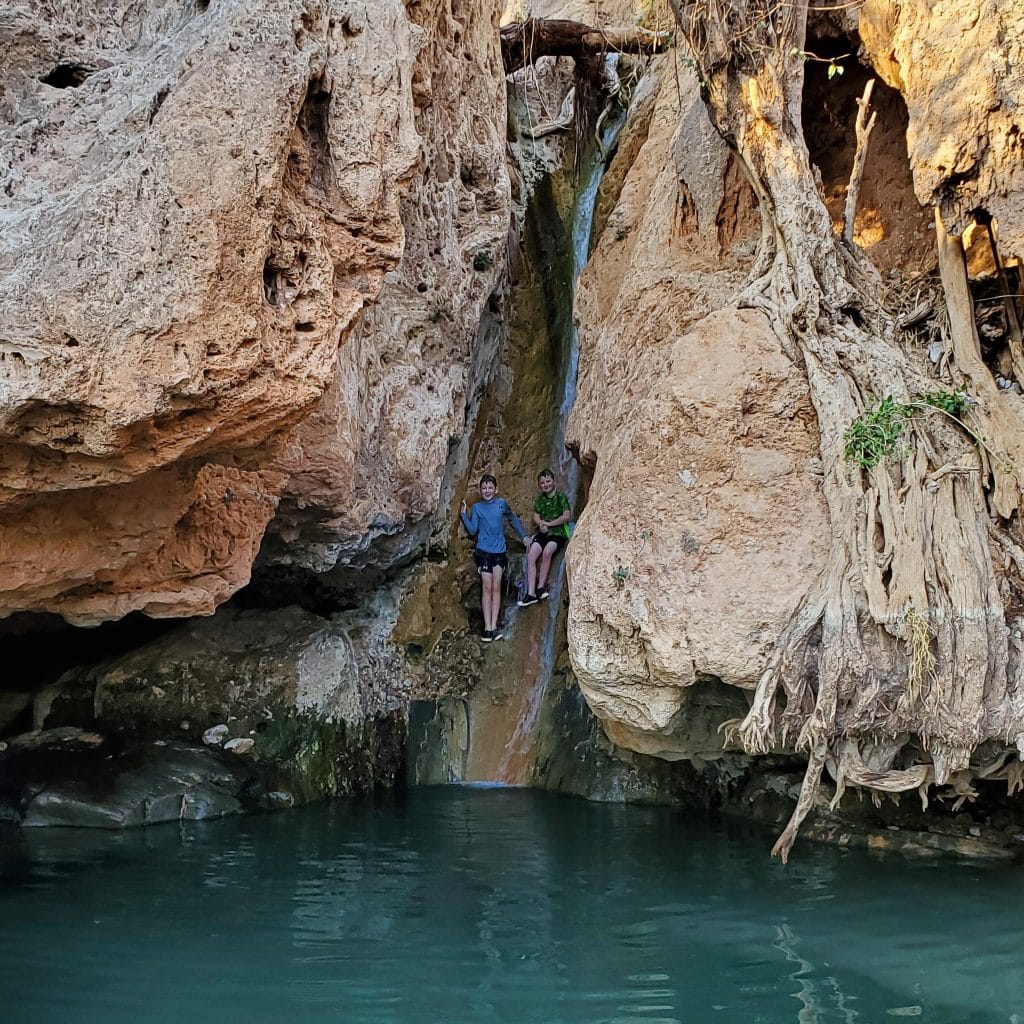
Driving Time: 6 hours.
Roads: Corrugated roads until you turn off the main road. The final 6 km to the campsite was challenging, with boulders, tree stumps, significant dips, potholes, and a steep, narrow decline to the campsite. This section took us about 20 minutes to navigate.
Twyfelfontein Attractions: Twyfelfontein is 18km from Madisa Campground and the three main areas take approximately 2 hours to visit.
Campground: Ongongo Waterfall Campsite.
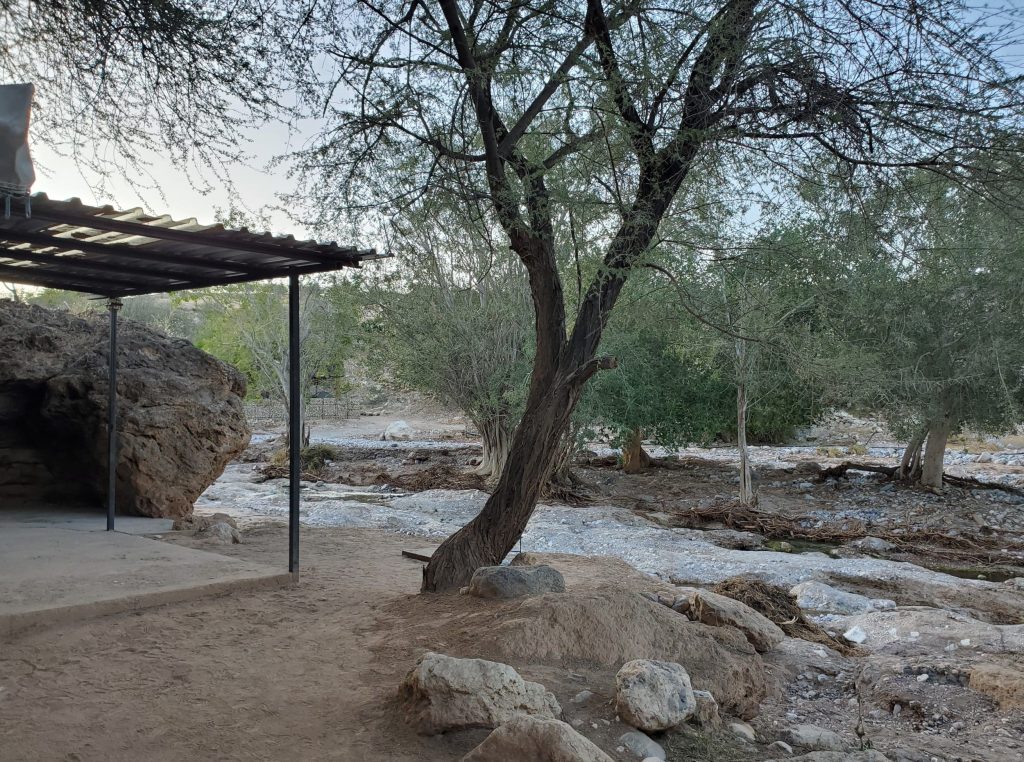
We stayed in a luxury campsite at Ongongo Waterfall Campsite, which included a private open-air bathroom and shower. The sites were spaced nicely, with brick barriers on either side and large leafy trees providing shade and privacy. The fire pit was located next to the covered patio. No power was on-site, and hot water came from a fire source. No Wi-Fi.
Day 14 – 16: Etosha National Park
We were thrilled to arrive at our first big game reserve. The boys dubbed it “Animal Day” and insisted on listening to The Lion King soundtrack as we made our way to our first game drive.
Wondering how to prepare kids for safari? Check out our post, Safari with Kids: Tips from the Road
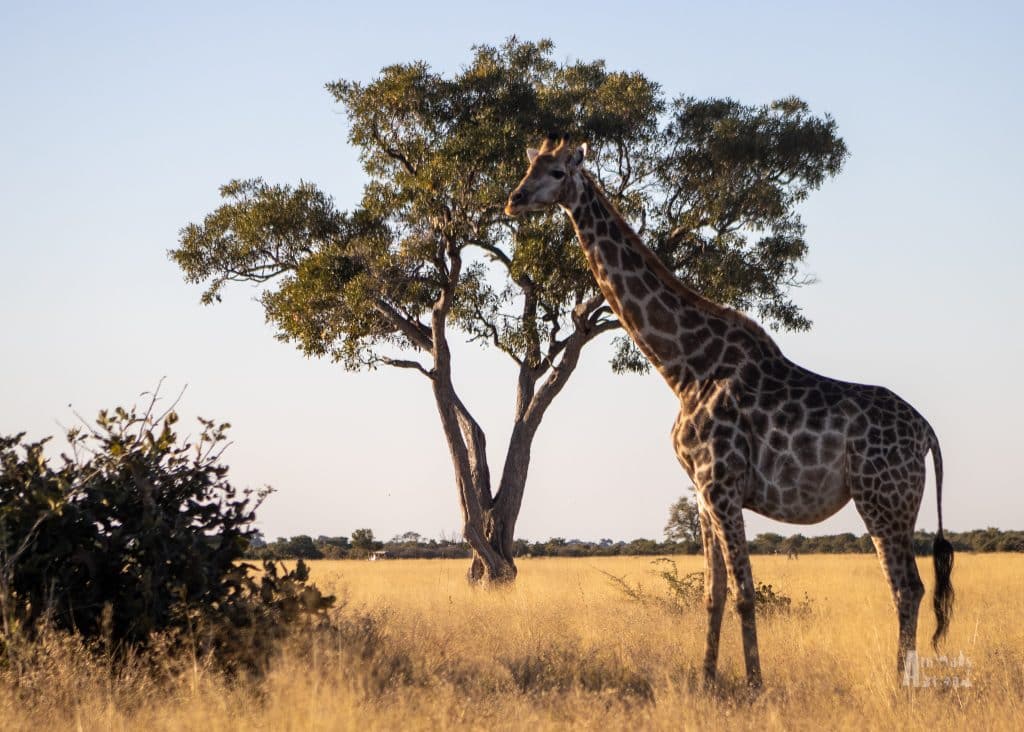
Etosha National Park is one of the best game-viewing parks in Namibia. Covering over 22,000 square kilometres, it’s worth booking at least three nights to explore the different areas. Staying in the campgrounds within the park provides access to lit watering holes, where, during the dry season, animals gather to cool off and drink. Dawn and dusk are prime times for game sightings, and we had some of our best encounters during these hours.
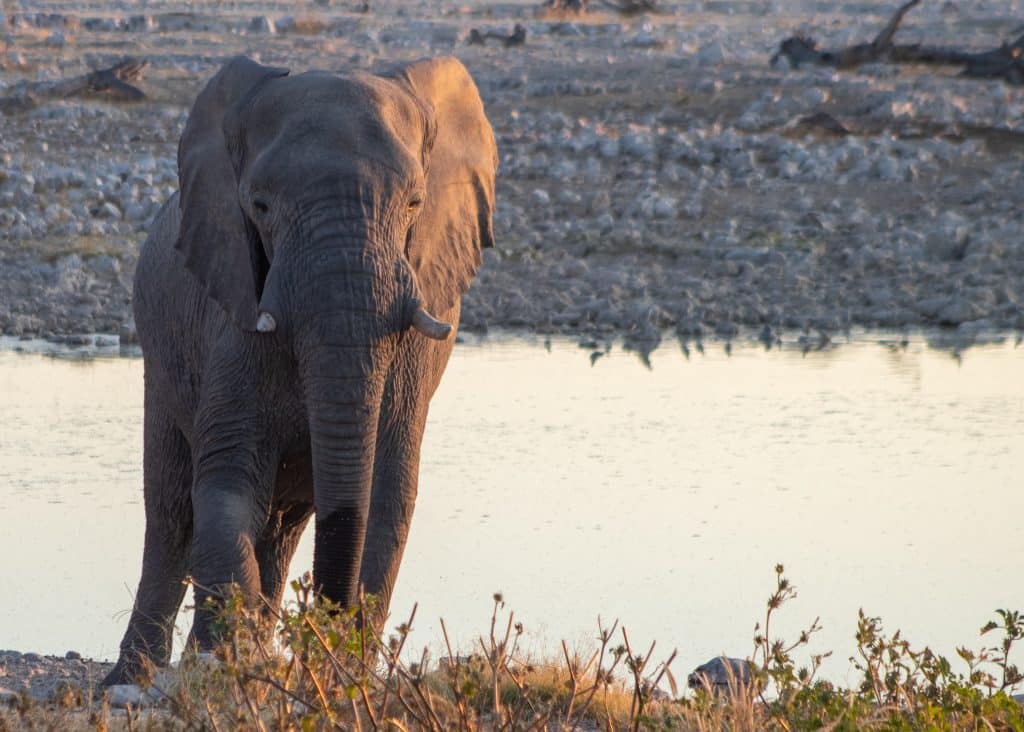
While there, we stayed at Okaukuejo, Halali, and Namutoni campgrounds. Each morning, we’d pack up and slowly drive to the next campsite, scanning the terrain for wildlife along the way. Etosha was the boys’ first safari, and they quickly became incredible animal spotters, often spotting wildlife before Derek and I could. We had close encounters with giraffes, elephants, rhinos, lions, herds of wildebeests and zebras, and various antelope species.
Learn More: Etosha NP with Kids: A Family Safari to Remember
Driving Time: 6 hours (GPS estimated 5 hours) from Ongongo Waterfall campsite to Etosha National Park.
Roads: The first half of the drive was challenging with corrugated gravel roads. However, after reaching Kamanjab, we transitioned to a paved highway with a 120 km/h speed limit. The roads into Etosha and throughout the park were well-maintained and easy to navigate.
Supplies: Groceries and fuel are available in Kamanjab if needed.
Campgrounds: Okaukuejo/Halali/Namutoni (NWR)
The campsites inside Etosha National Park are like other NWR campgrounds: full of amenities but busy and cramped, offering little to no privacy. Shared kitchens and ablution facilities were available. Halali had the best showers with hot water. Power was available on-site. Wi-Fi was available for a fee. For those concerned about wildlife, the campgrounds were fenced.
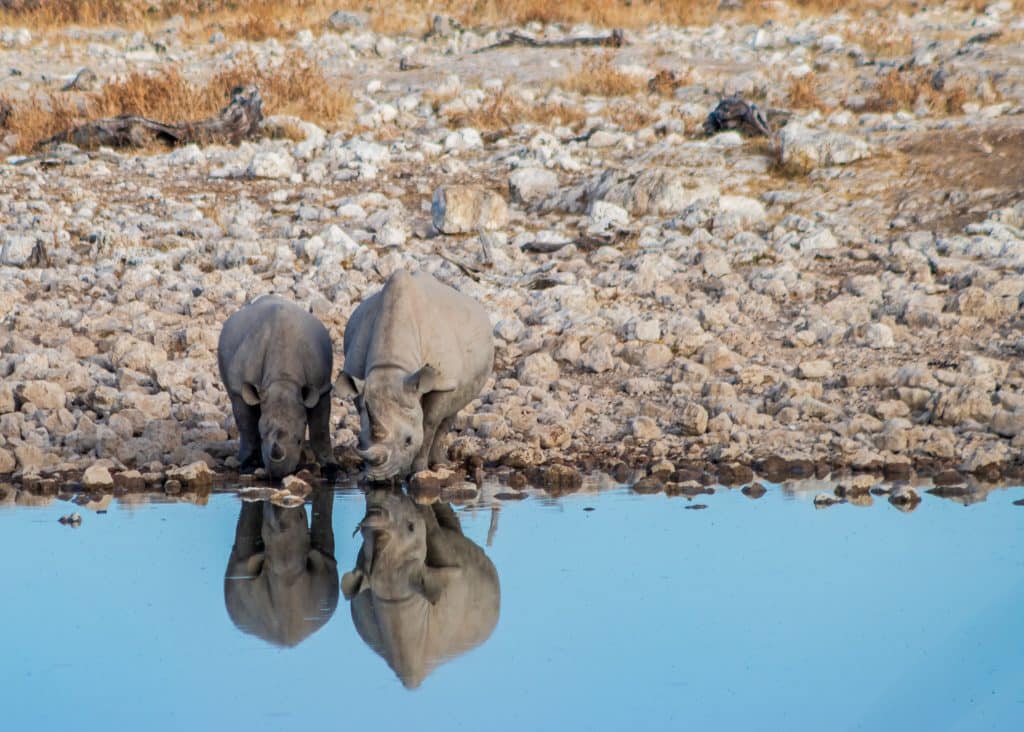
Okaukuejo’s Waterhole was by far the best for proximity to the animals and sightings. It’s a must-visit if you’re in the area.
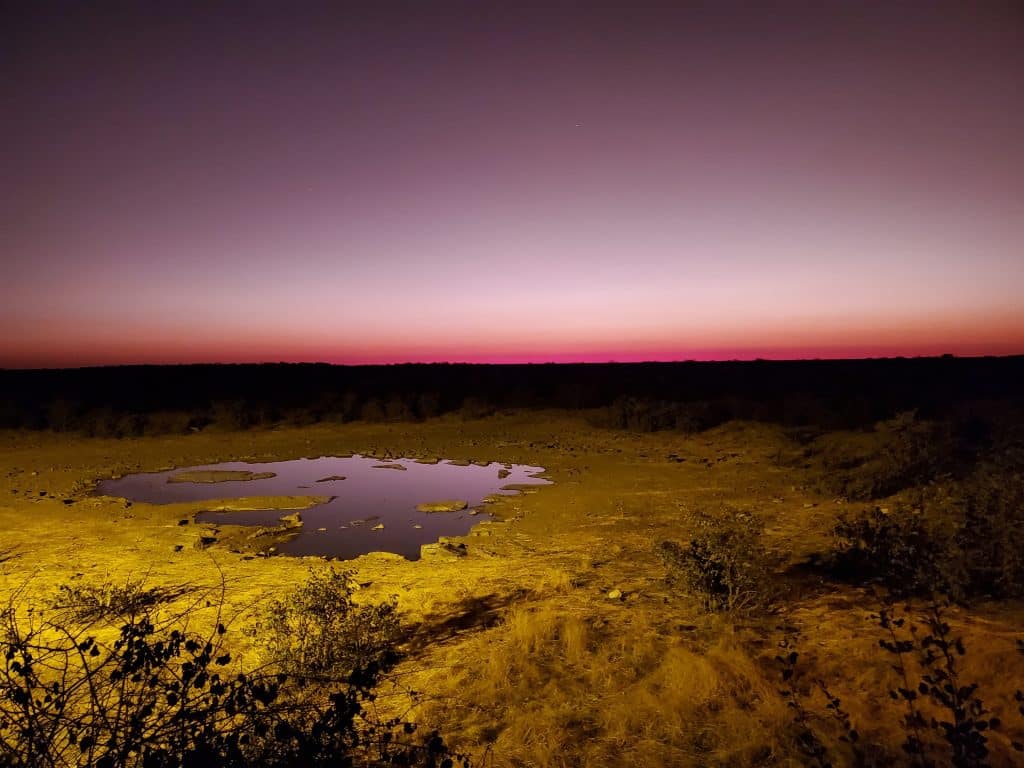
Halali’s Waterhole also offered great viewing opportunities. The seating area was rustic, with large boulders carved into seating and trees supporting a covered patio.
Namutoni’s Waterhole was disappointing. The pond was set so far from the viewing area that it was challenging to identify animals without binoculars.
Day 17 – 19: Okonjima Nature Reserve
Known for its luxury accommodations and incredible wildlife, we were all excited about our stay at Okonjima Nature Reserve. This family-owned conservation property is home to some of Namibia’s most elusive species, such as leopards, pangolins, brown hyenas, and white rhinos.
Learn More: Okonjima Family Safari: Where the Wild Things Wait
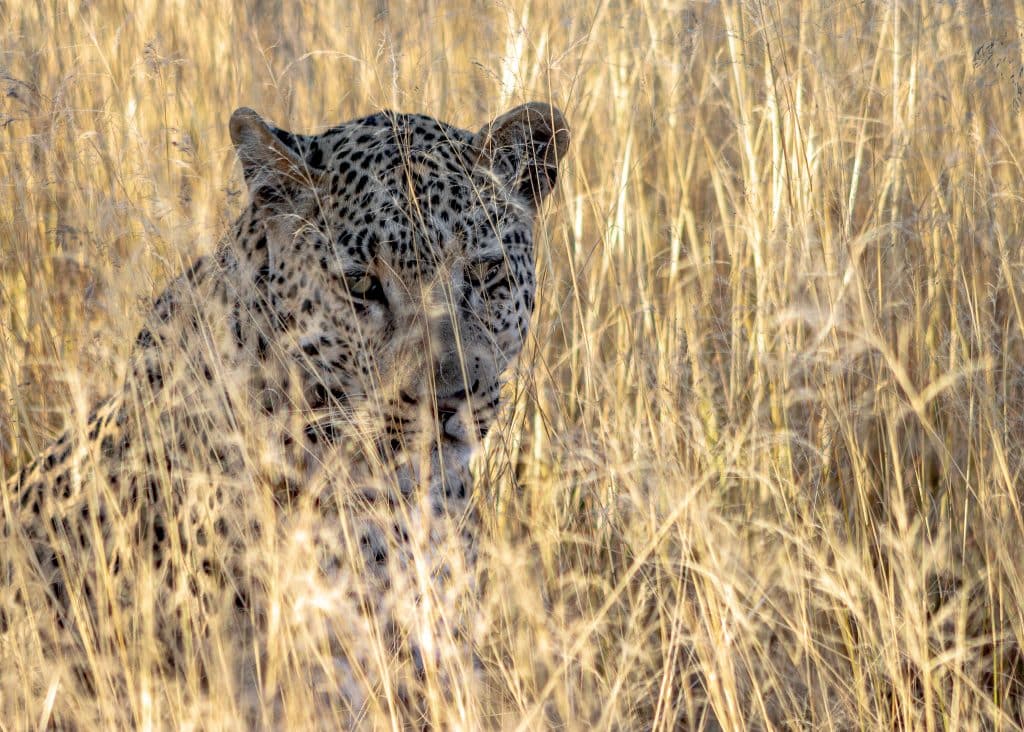
Okonjima is a full-service resort offering package deals unlike other parks we’ve visited. Self-driving is not allowed here; guides must accompany guests on game drives. The reserve offers a range of activities, including hiking, day and night game drives, animal-specific tracking tours (for pangolins, rhinos, and leopards), and a fascinating education center.
Driving Time: 4 hours and 30 minutes from Etosha National Park to the Okonjima Nature Reserve entrance.
Roads: Paved highway until you reach the entrance, then a dirt road (25 km) leading to the reception area. Take your time as you drive through—there are plenty of animals to spot along the way. We had our best rhino sighting on the way in!
Supplies: We stopped en route in Tsumeb, one of the larger cities, for any necessary supplies.
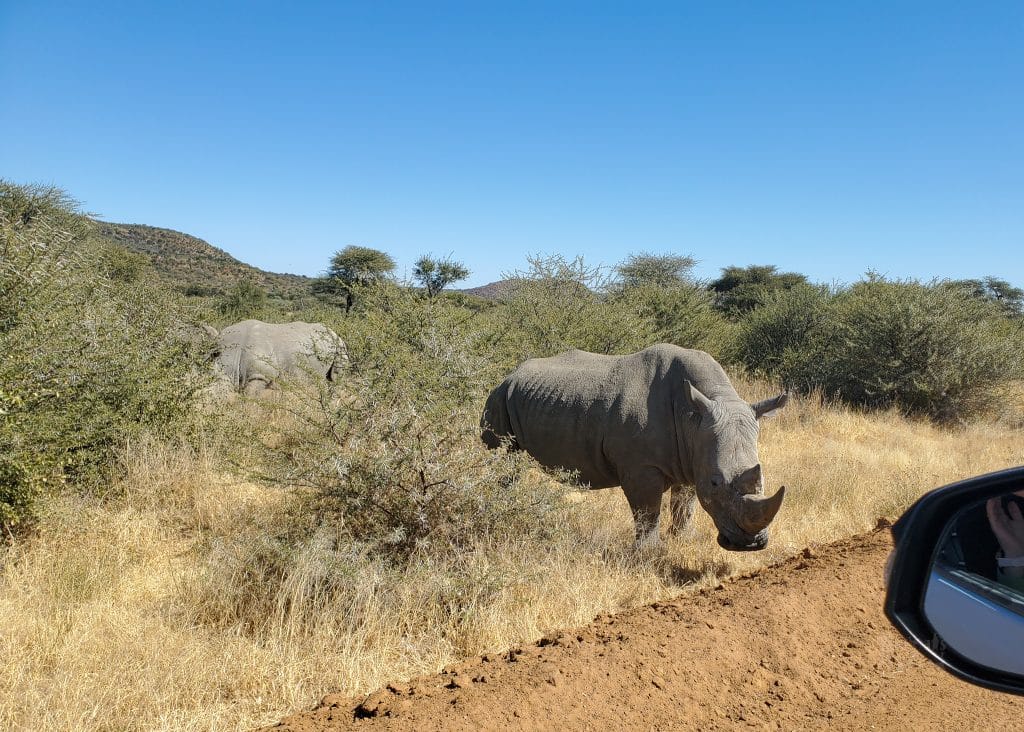
Okonjima Nature Reserve Campsite offered a serene and private experience with just four campsites nestled within the reserve. Each spacious campsite had a large, covered patio, power source, fire pit, complimentary firewood, and private open-air ablution facilities. The campsites were fenced off the main reserve area, but small animals like cape hares and antelopes roam freely. While there is no guarantee that large animals and predators won’t wander through the campsite, the experience is unique and intimate. A communal pool was available for campers within a short walking distance, and Wi-Fi was accessible at the reception.

Day 20: Okonjima to Grootfontein
Ghaub Campground was a quick stop as we made our way east to the Caprivi Strip. We were delighted by the serene campsite on arrival, but little did we know we were in for a long night!
Learn why we later dubbed Ghaub campground the “Baboon Site.”
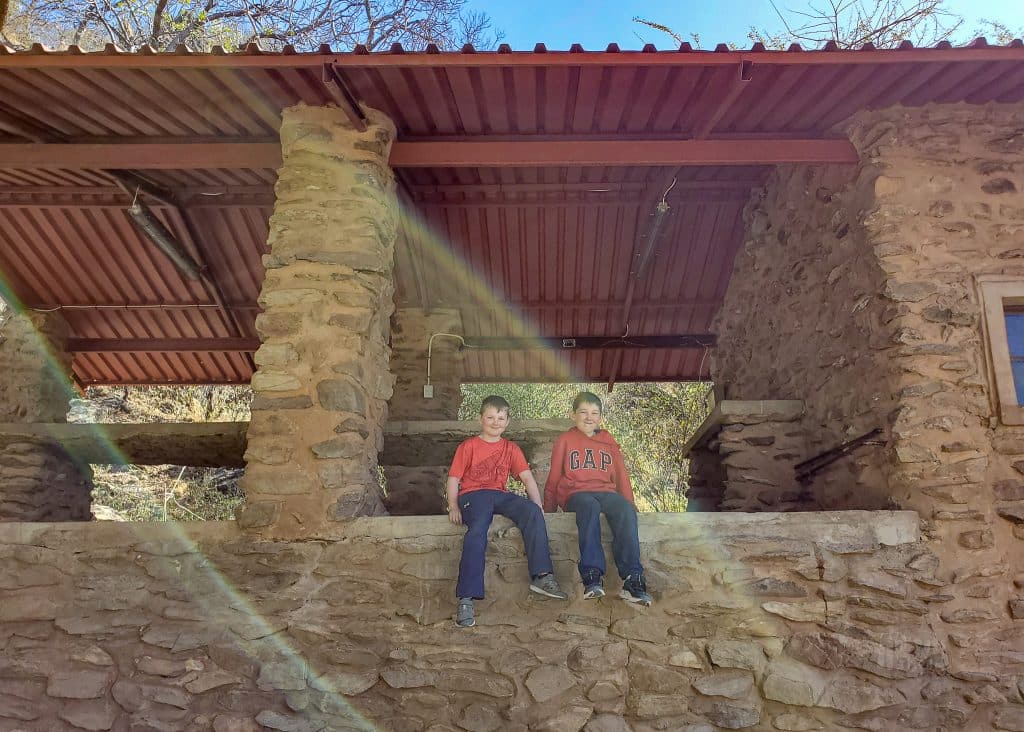
Driving Time: 3 hours.
Roads: Paved highway.
Supplies: Stopped in Otjiwarongo for groceries.
Campground: Ghaub Campground.
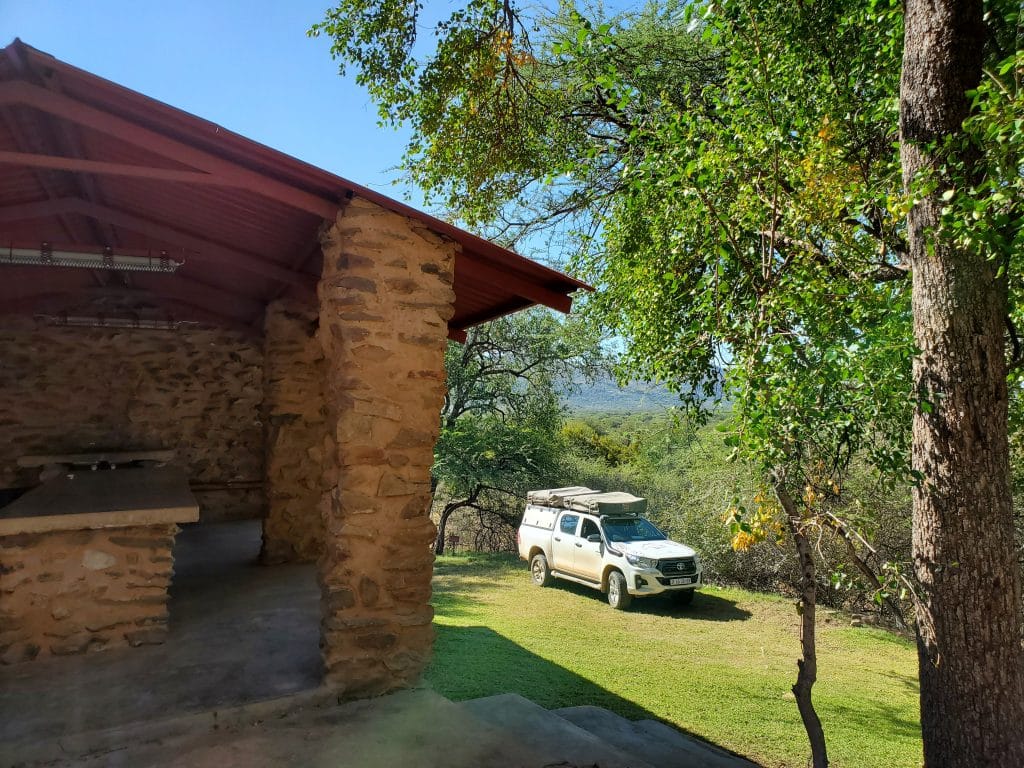
This picturesque campsite overlooked a stunning mountain range and valley. The multi-level site featured a grassy area below, perfect for parking campers or setting up tents, and an upper level with a covered patio, a large cement table seating up to twelve, a fire pit, and an outdoor washing sink. At the back of the building, you’ll find two bathrooms equipped with showers. Hot water came from a fire source. Power was available on-site, and Wi-Fi was accessible at reception, a 5-10 minute walk from the campsite.
Day 21: Grootfontein to Rundu
After the restless night, we were eager to leave early in the morning. It was an easy drive to Rundu, the gateway to the Caprivi Strip. The Kaisosi River Lodge borders Angola and Namibia, separated by the Kavango River and features a large outdoor deck perfect for enjoying the river, with the possibility of spotting hippos.
Note: The Kavango River, as it is known in Namibia, is referred to as the Cubango River in Angola, and the Okavango River in Botswana.
In addition to the scenic views, there were plenty of kid-friendly activities for the boys. The lodge included a restaurant, a games room with a pool table and foosball, and various outdoor amenities like a pool, trampoline, swings, tetherball, and mini golf. The boys had a blast and enjoyed having some freedom to explore.
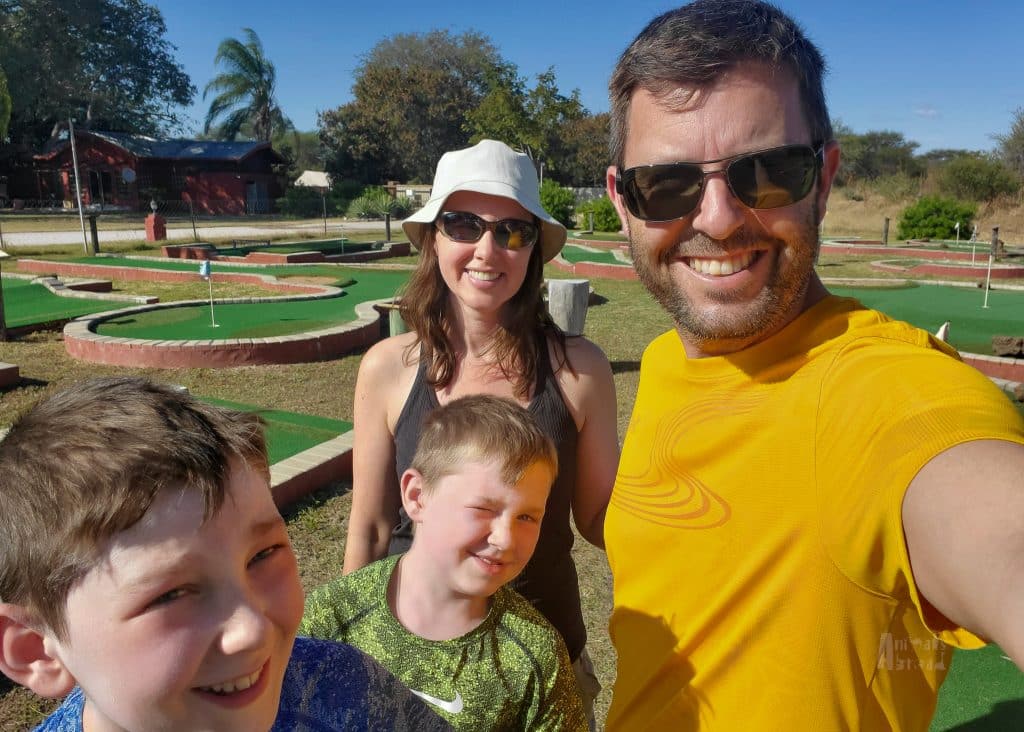
Driving Time: 4 hours
Roads: Paved highway
Campground: Kaisosi River Lodge
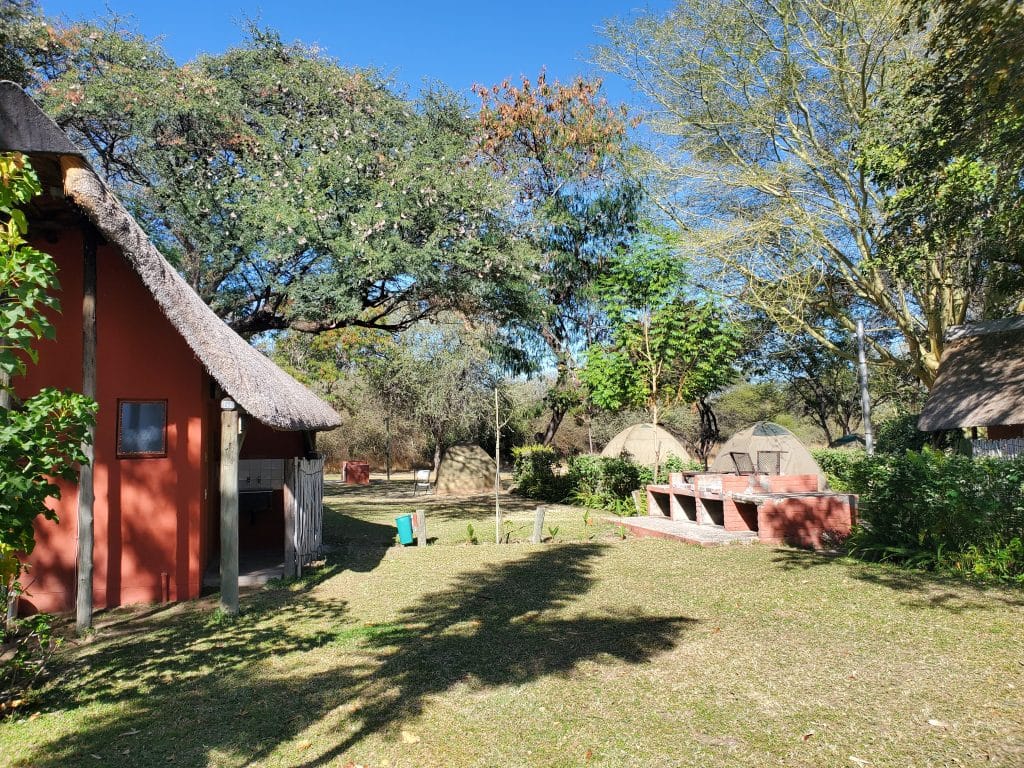
Typically, Kaisosi River Lodge wouldn’t be our favourite campground due to the proximity of campsites and lack of privacy. However, the amenities more than made up for it. The individual campsites had power and lights, a private bathroom with a shower (hot water on demand), an outdoor wash sink, and a fire pit. Wi-Fi was included, and reached the campsite intermittently.
Day 22 & 23: Bwabwata National Park (near Divundu)
Bwabwata National Park, part of Namibia’s Caprivi Strip, is often overlooked in favour of larger parks, but it is well worth a stop if you are in the area. The park is divided into three main sections: Mahango, Buffalo, and Kwando, each offering different landscapes, wildlife sightings, and experiences.
Learn More: Exploring the Caprivi Strips with Kids.
The campground we stayed at, Ndhovu Safari Lodge, was located about 10 minutes away from the Mahango entrance and just across the Kavango River from the Buffalo Core.
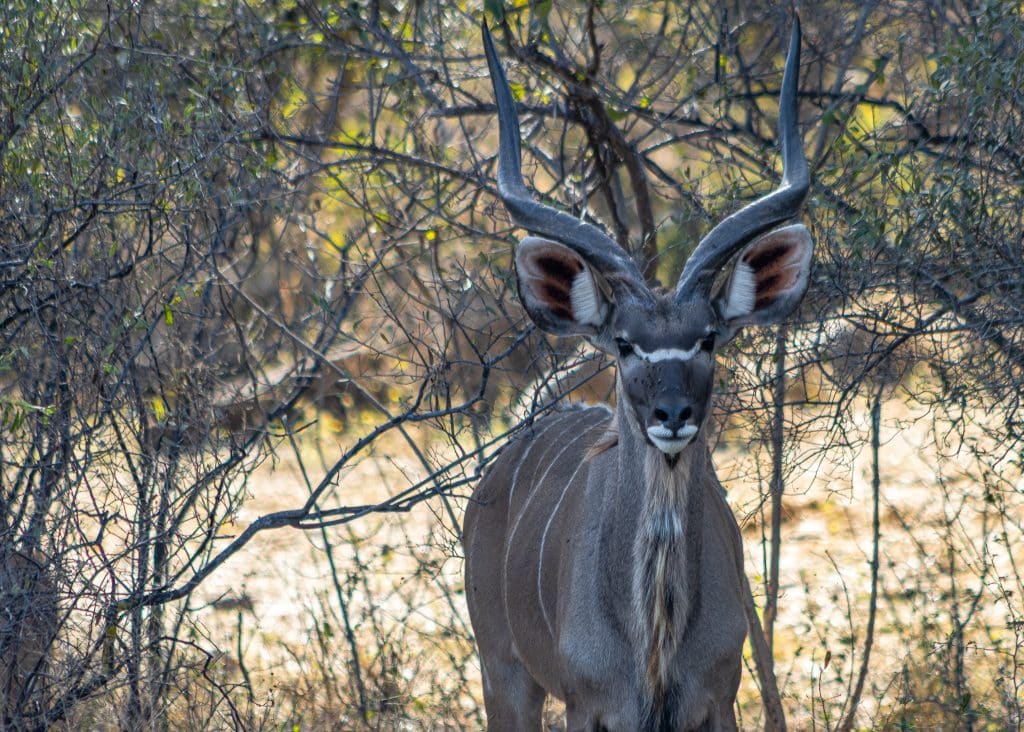
Driving Time: 2 hours and 40 minutes from Rundu to Divundu.
Roads: Paved highway.
Campground: Ndhovu Safari Lodge.
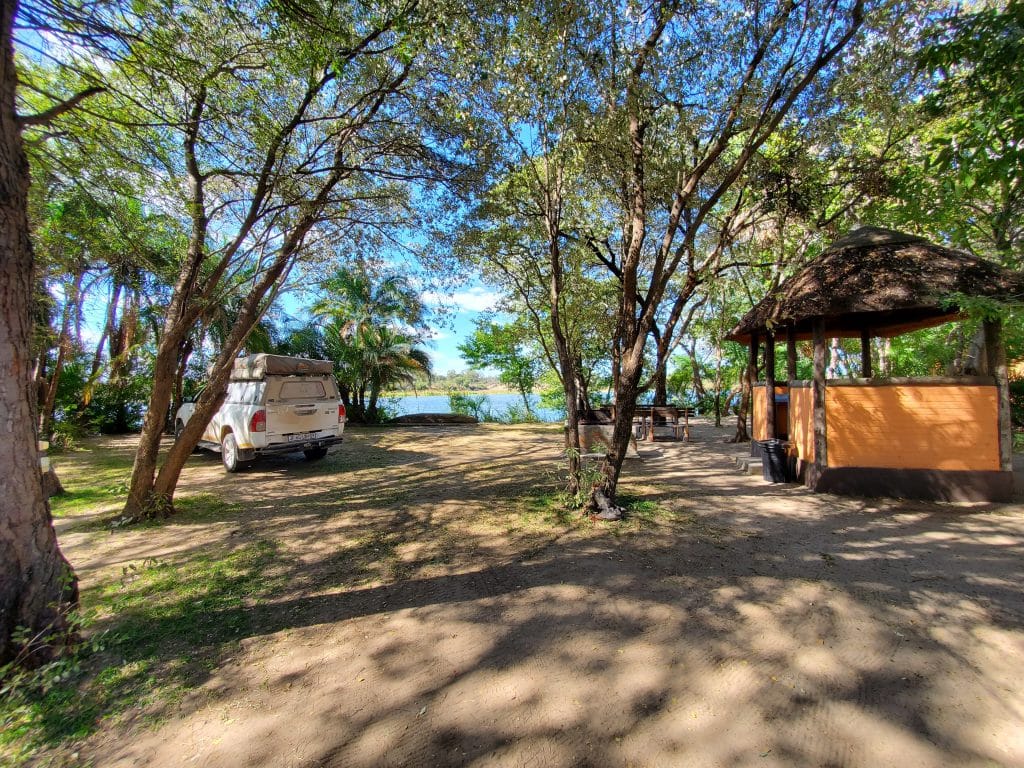
Ndhovu Safari Lodge offered spacious campsites with river views and beautiful leafy trees providing plenty of shade and privacy. Each site included a small fire pit and a covered wash area for dishes. There were two private bathrooms and shower rooms with hot water on demand. Wi-Fi was available at the reception/restaurant area. Laundry service was also available for a fee. For the kids, there was a pool and two adorable dogs to befriend.
Safety Tip: Hippos are known to wander through the campsites from dusk to dawn. Beware when walking at night. They are territorial and can be highly dangerous if they feel threatened. More people are killed by hippos each year than by any other animal in Africa. Never get between a hippo and the water.
Day 24 & 25: Nkasa Rupara National Park
Deeper in the Caprivi Strip, you’ll find Nkasa Rupara National Park. Remote and less visited, this park was some of the wildest terrain we encountered in Namibia. It is home to lions, leopards, elephants, hippos, and cape buffalo. While we spotted several warthogs and a handful of impalas, the highlight of our day was a massive herd of cape buffalo grazing next to the road, giving us an up-close view.
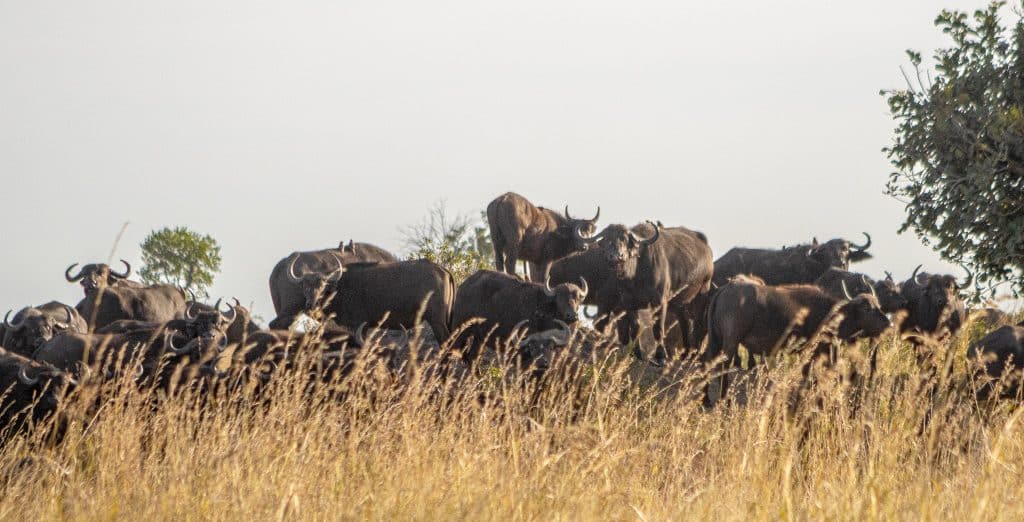
Driving Time: 4 hours from Divundu to Nkasa Rupara National Park
Roads: Paved highway.
Campground: Livingstone’s Camp
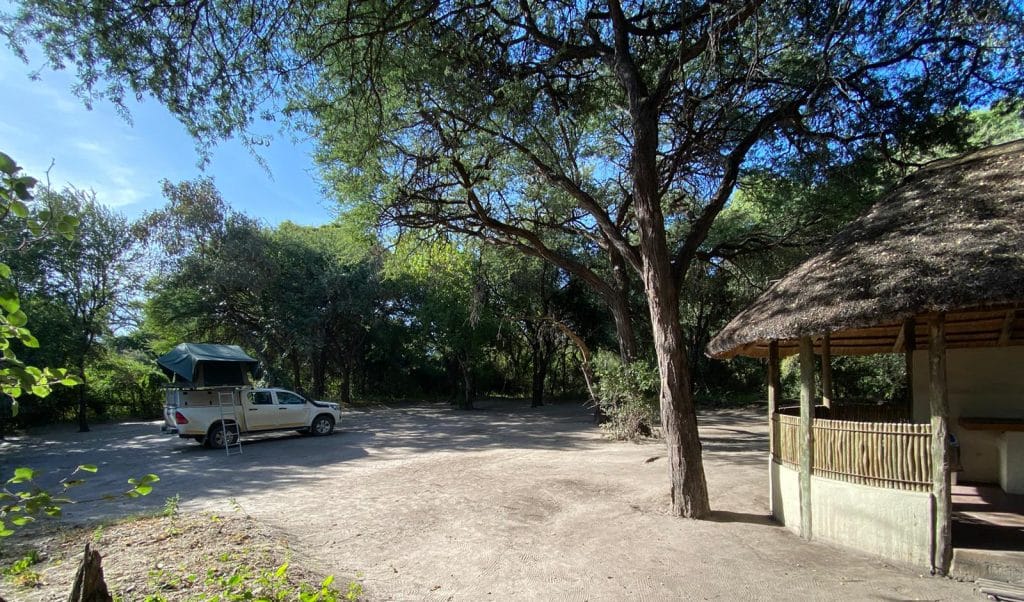
Finding Livingstone Campground was challenging due to poorly marked roads and missing signage, which caused us to backtrack in search of the GPS signal. After a few detours, we arrived at a stunning campsite that opened to a vast grassy plain—perfect for game viewing. Just set up your chairs around the fire pit and wait for the animals to come to you.
This private campsite offered a large, covered patio with a wash sink, outdoor seating, and a bathroom with hot water on demand. Solar panels powered the site, so lights and plugs were available to charge cameras and other electronics. There was no Wi-Fi. The park was unfenced, and animals, including hippos, elephants, and lions, were free to roam in and out of the campsite.
Day 26: Nkasa Rupara National Park to Katima Mulilo
Katima Mulilo is the largest city in the Caprivi Strip and the closest to the Zambian border. As you enter Caprivi Houseboat Safari Lodge, it feels like you’re entering a jungle. Towering trees with dense canopies, thick vines in various shades of green, and large-leafed bushes block out much of the sunlight along the path.
The reception was the perfect place to rest, catch up on some schoolwork, and soak in the beauty of the Zambezi River. From here, we could easily spot crocodiles and hippos lounging near the banks.
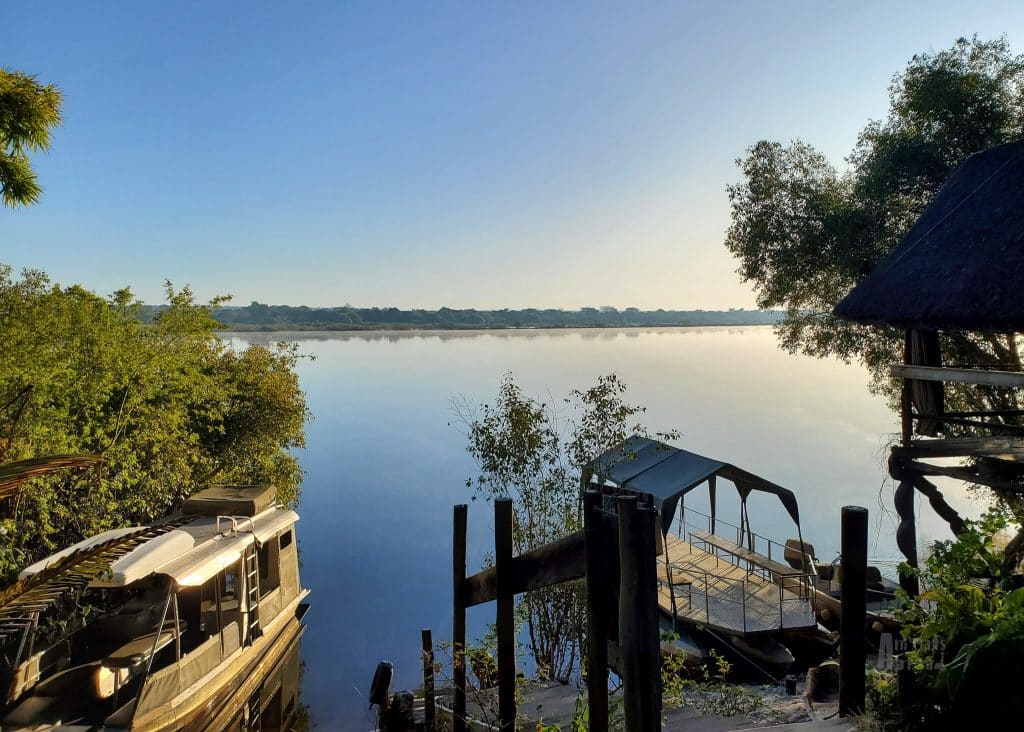
Driving Time: 2 hours
Roads: Paved highway
Campsite: Caprivi Houseboat Safari Lodge
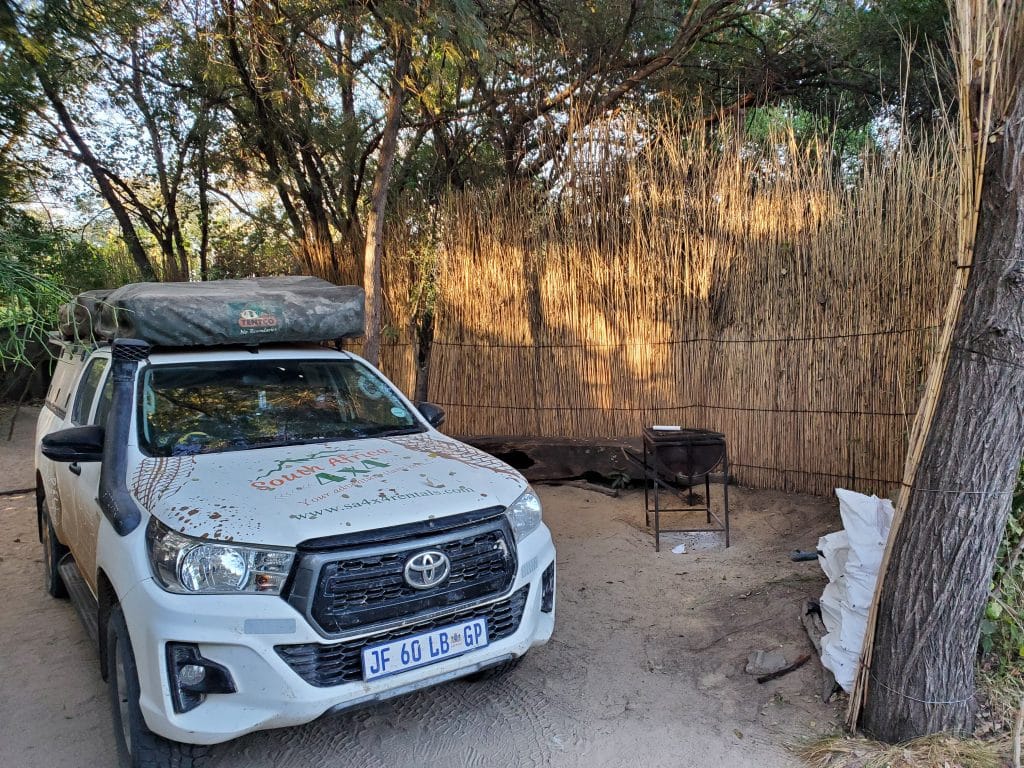
Tall straw stalks marked the boundaries of individual campsites at Caprivi Houseboat Safari Lodge, creating privacy. The sites were basic and equipped with a fire pit, power, and a wash sink. The camp provided firewood, and communal ablution facilities with hot water on demand were available. Wi-Fi was available at reception and reached the site.
Up Next — Zambia
Tomorrow we will cross the border into Livingstone, Zambia and explore the wonders of Victoria Falls.
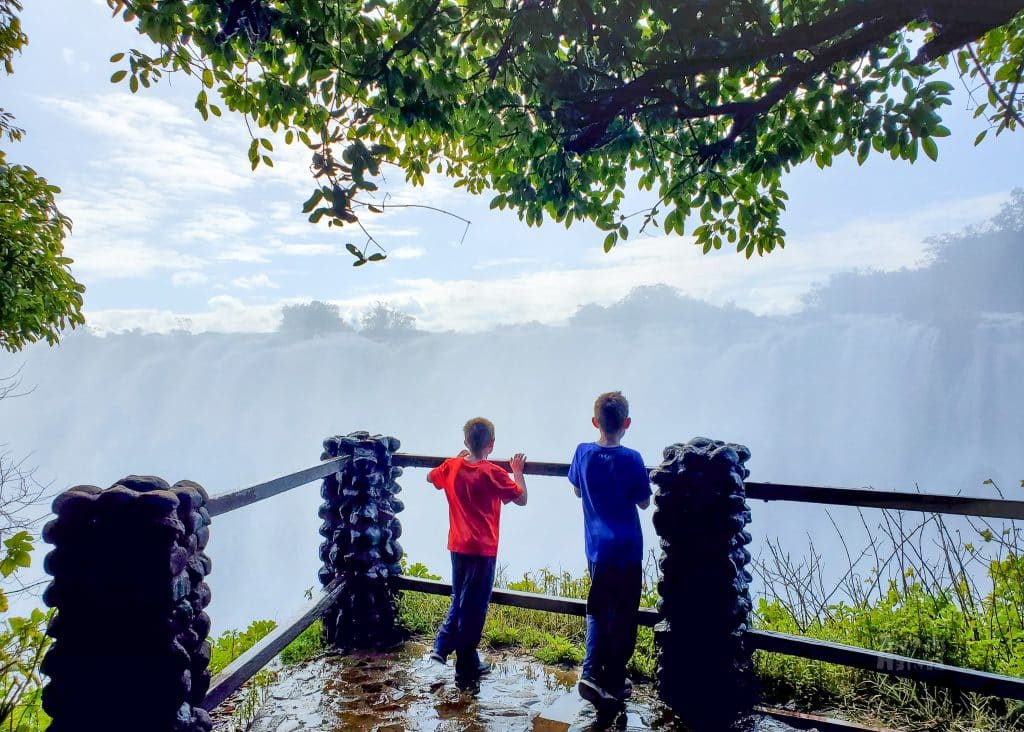
Ready to Create Your Own Wild Adventure?
Check out these related posts to help plan your trip:
- 51-Day Africa Safari – Part 1: South Africa & Namibia’s Coast
- 51-Day Africa Safari – Part 2: Namibia’s Etosha & Caprivi Strip
- 51-Day Africa Safari – Part 3: Victoria Falls & Botswana
- Our Best and Worst Day on Safari
- Camping Safari in Africa: Know Before You Go
- Camping Across Southern Africa: A Rundown of our Safari Campsites
- Navigating Border Crossings in Southern Africa
- Safari with Kids: Tips from the Road
- Etosha NP with Kids: A Family Safari to Remember
- Exploring the Caprivi Strip with Kids
- Okonjima Family Safari: Where the Wild Things Wait
- The Smoke that Thunders: A Trip to Victoria Falls
- Into the Wild: Chobe NP with Kids
- Sunset Cruise on the Chobe River: A Photo Journey
- Living Giants: A Photo Journey Through Nxai Pan National Park
